




Minneapolis is renaming a portion of Plymouth Avenue to honor one of its greatest visionary community organizers, Harry “Spike” Moss, Freedom Fighter. The ceremony takes place at 11am Tuesday, July 16, with a program at U of M’s University Reseach Outreach and Engagement Center (UROC) and with the street sign unveiling in front of the Fourth Precinct Police Station, 1925 Plymouth Avenue, which was the site of The Way Opportunities Unlimited, Inc. Insight News will present special commemorative editions featuring the life and work of Spike Moss in its July 22nd and July 29th editions. Community residents and organizations who want to share congratulations, stories and photos of Spike Moss for the special editions can email comments to mcfarlanemedia@ gmail.com. On the Cover: Moss was one of several luminary civil and human rights champions celebrated in a Comcast community gathering in 2018 recognizing their stellar service to community and humanity. Following are excerpts from Insight News features on, with or about Harry “Spike” Moss. ( Full stories available in the www. insightnews.com archive online.
Militant? Jan 20, 2003 Spike Moss interview
Al McFarlane: Often you’ve been referred to in the white media as a militant activist…Why do they call you “militant”. Why don’t they call you “Spike Moss, Black liberation fighter?” Spike Moss: The majority community has never wanted our people to know about our struggles for freedom. That it’s a just cause. That it’s about justice and equality. They try to paint the picture that most of our leadership just like to make trouble or are racists themselves.
AM: Yet John Walker, who sided, allegedly, with the Taliban in Afghanistan was constantly referred to as the American Taliban fighter,. in a tone that was respectful and almost mythically romantic, celebratory. I’m trying to see
where in my memory the same kind of respect is accorded to Black people, in our struggles for human rights and liberation. Why is our society able to almost glorify this guy, and create sympathy for the Timothy McVeighs, and Jeffrey Dahmers, of America, but won’t accord us the dignity of acknowledging our struggle or even our humanity?
SM: There are two questions and two answers. On the one hand, we have to understand that majority of the White community knows there is a large population of White men and women in this country who want to overthrow this country.
AM: For what purpose?
SM: To take it back. They feel someone has taken their country.
AM: They don’t believe in the idea of democracy?.
SM: No, their idea of democracy is democracy for Whites only. They have all sorts of names. Nazis, Skinheads, the Aryan race. They’re called Minute Men… Militia. They are hell-bent on taking this country back. Our government doesn’t want to do anything to irritate them or cause more people to join or send them money [for fear of a] second Civil War,. Hardly a month that goes by that, somewhere in this country, those groups don’t burn a Black church, or torch some Black home, or kill some Black person. It’s just not on the news. On the flip side the strategy is to keep us oppressed, with the person oppressing us, making it look like the oppression doesn’t exist. They make it look like Black people are just making trouble. They’re activists, militants, trouble makers. They make it look like Black people are racists. They don’t want it to appear that in the “land of the free” people in this country are simply not free.
Every problem that happens to us stems from the fact that we don’t have freedom and don’t have the rights [which] come with citizenship, with being born in this country. The only time we are treated like we’re part of this country is when this country is at war and we’re on the front line.
Or when it’s time to pay the taxes. We pay our share, but are not allowed our equal opportunities to share the true benefit of being an American. The suburbs are created for and by White Americans, not you. They live successfully.. You can’t count how many of them are millionaires. When it comes to businesses, you can’t even count. When it comes to proper education, you can’t even count, because we’re nowhere in that scenario worth mentioning.
Still, they ostracize Blacks, because they don’t recognize our humanity. They began the country assigning our value as that of three-fifths a human, for their voting power purposes. A Supreme Court justice wrote that the Negro has no rights the White man must respect.
AM: What then is our responsibility? Regardless of what racists say, do or think? What do we have to do?
SM: That’s where we went wrong in the 60s. We let them take control of our movement.
I switched, myself, from 1966 to ‘67, I became part of the Black Power Movement.
A great migration of our own Mar 1, 2013
A Speech By Lea Hargett, President, Minnesota Black Chamber of Commerce, delivered at the West Broadway Business and Area Coalition Black History Month Breakfast, 2013
I bring you the greetings and well-wishes of the board of directors and members of the Minnesota Black Chamber of Commerce who stand with you in your quest to bring businesses together to make sure the West Broadway Corridor is thriving and filled with sound and successful businesses.
When I was asked to speak today, I was told that the event was a breakfast in honor of Black History Month. And of course that got me thinking. I flashed back to so many moments in our Black history. It was difficult to narrow down one single period or topic. My thoughts raced to the Middle Passage in the 1660’s when our ancestors were brought here on slave ships. I found myself thinking about the 1760’s, 100
years later, when our ancestors toiled in the burning heat, picking cotton in the fields of southern plantations. Then, I smiled as I thought about the 1860’s, when the Emancipation Proclamation was signed into law.
If what history tells us is true, from 1910 to 1930, there was a Great Migration where 1.6 million Black people moved from the south to the north, many believing they were traveling to “a land flowing with milk and honey.” History also tells us that there was a second Great Migration from 1940 to 1970 in which another 5 million of us uprooted ourselves from the south, headed north, and tried to get in on this luscious land of milk and honey. All in all, we are told that during the 20th Century about 6 million African Americans left the south and traveled north in search of that milk and honey. When I think about this time, I image our great grandfathers and great grandmothers were preparing for the Great Migration, preparing to get up out of the south. Think about the excitement that probably ran through every bone in their bodies as they prepared to leave the southern states, a place where their mothers and fathers – and their mothers and fathers – and their mothers and fathers had known for so long. Yes, the time had come for our great grandfather’s and great grandmothers to travel to that place they had heard so much about: to a place that flowed with milk and honey. In the book “Black America Past to Present”, author Marcia A. Smith wrote “The Great Migration set the stage for the emergence of a self-assured, sophisticated, and politically militant black leadership and the flowering of African American culture”. Our ancestors were deliberate in their pursuit. We are told that black people moved as individuals and as family units during the Great Migration. We are told they received no government help, yet, that didn’t matter because they were trying to escape rampant violence and lynching in the south as well as a lack of jobs and other opportunities. Just think about it. In 1900, there were only about 700,000 African Americans who lived
outside the south; just 8 percent of the nation’s total black population, and by 1970, there were over 10.5 million black people living outside of the south, almost half the nation’s total black population.
Oh how excited our African American ancestors must have been as they boarded the carriages in the early 1900’s, and decades later, when they boarded the buses and trains that would carry them from the south to the north. We’re told most of them were so excited they left the few worldly possessions they had behind. So excited they could already taste the milk and honey.
Imagine how they must have felt two years before their trip, working by day and dreaming by night about that special place where they would make a new start, be able to take care of their families, educate themselves without repercussions, pay rent to a landlord instead of a plantation owner, buy a house, or God willing, someday, build a business of their own. And how they must have felt weeks prior to their departure date as they counted their money, praying they had saved enough to make the big trip. We now know many of our ancestors did make it to the supposed promised- land; a few of them were actually able to taste the sweet sensation of milk and honey on the tips of their tongues. We now know that when they got here – in the 1920’s, 30’s, 40’s, and 50’s, some of our them were able to find work as laborers for big industries, find employment in local shops, buy homes, educate themselves, and, yes, even start a business. But what was life really like for our people who came from the south and traveled north yearning to do so much? Had they really found a land that flowed with milk and honey?
A year before he died, in the year 2000, the Late Harry Davis talked about what life was like in the first half of the 20th Century for blacks who made it to Minnesota; what life was like for our people who planted their seeds of hope right here in north Minneapolis.
In an interview he gave in a documentary entitled, “We Knew Who We
Were,” produced by the Jewish Historical Society of the Upper Midwest, Harry Davis talked about north Minneapolis after our relatives arrived in north Minneapolis, saying, “There were Jewish boys (and) young African-American boys playing basketball together. We crossed racial and religious lines and so that’s why it was so unique.” Harry Davis said north Minneapolis had been a place where historically persecuted people came together, saying, “The whole relationship of togetherness was developed because we were kind of equal in terms of economics.” In a KARE 11 story, filed by reporter Scott Goldberg in 2007, Goldberg began his news report by saying, “Underneath the North Minneapolis that grabs headlines — the neighborhoods dealing with big-city problems — there is a community that, for decades and through generations, had the feel of something more simple.” In his KARE 11 story, Goldberg interviewed Reva Rosenbloom, a Jewish lady who grew up at 16th and Oliver Avenue North and lived there until she was married in 1954. Reva Rosenbloom talked to KARE 11 about what it was like to grow up in north Minneapolis 50 years ago. She said, “Nobody locked their door, you could walk down the street and know everybody,” She said her parents owned a dry goods store on Plymouth Avenue, which was, at the time, a booming business district.” Referring to Plymouth Avenue she said, “And that’s where everybody did everything. It was like a small town. They didn’t go downtown. We didn’t have shopping malls.” From what I have learned, there were Jewish businesses up and down Plymouth Avenue in the 1950’s and 60’s, but there were also small black businesses interspersed on Plymouth Avenue, along the old Highway 55 which is now Olson Memorial Highway, and some on West Broadway. Were these black businesses large businesses which employed hundreds of people? No. Most black businesses in
and 60’s in north Minneapolis
















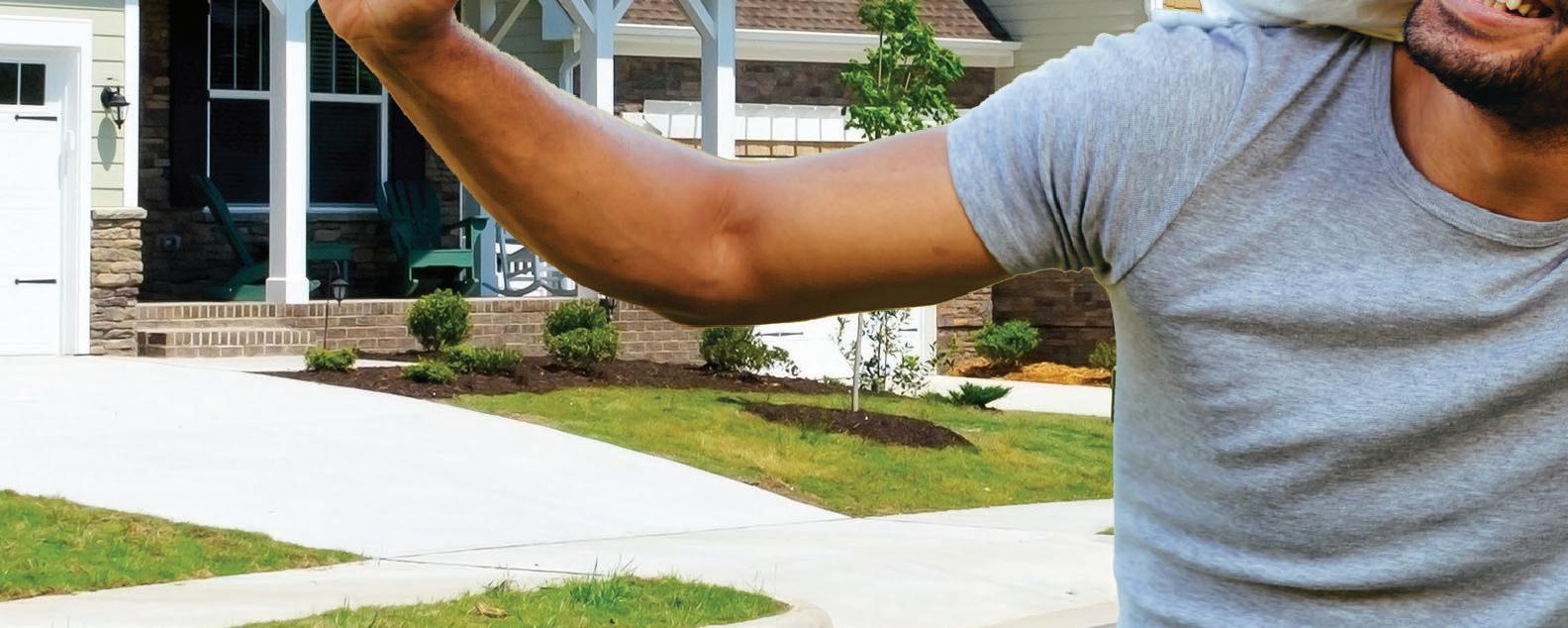
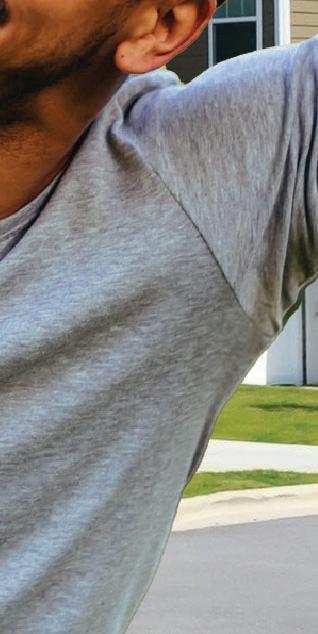

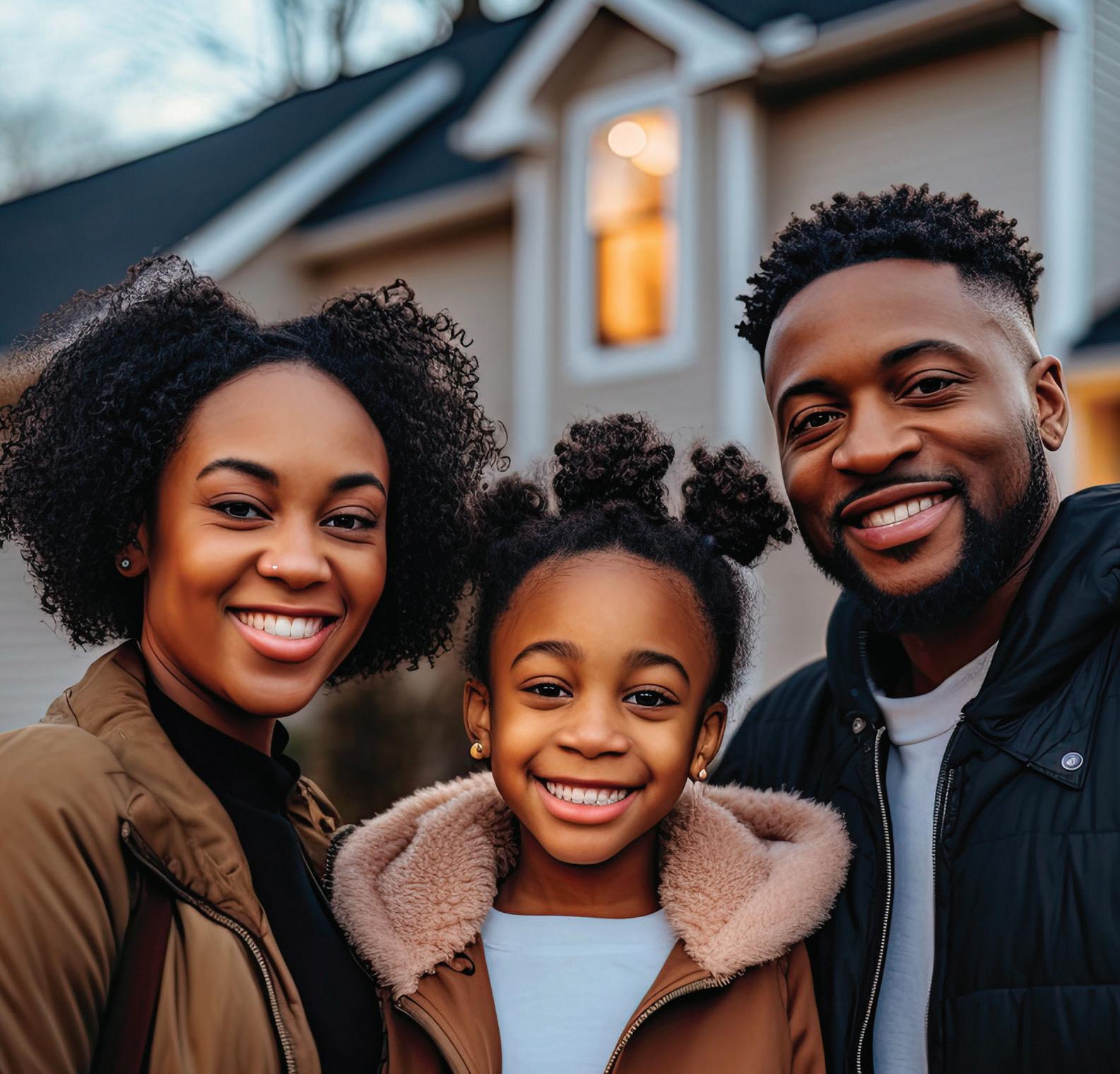




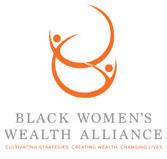














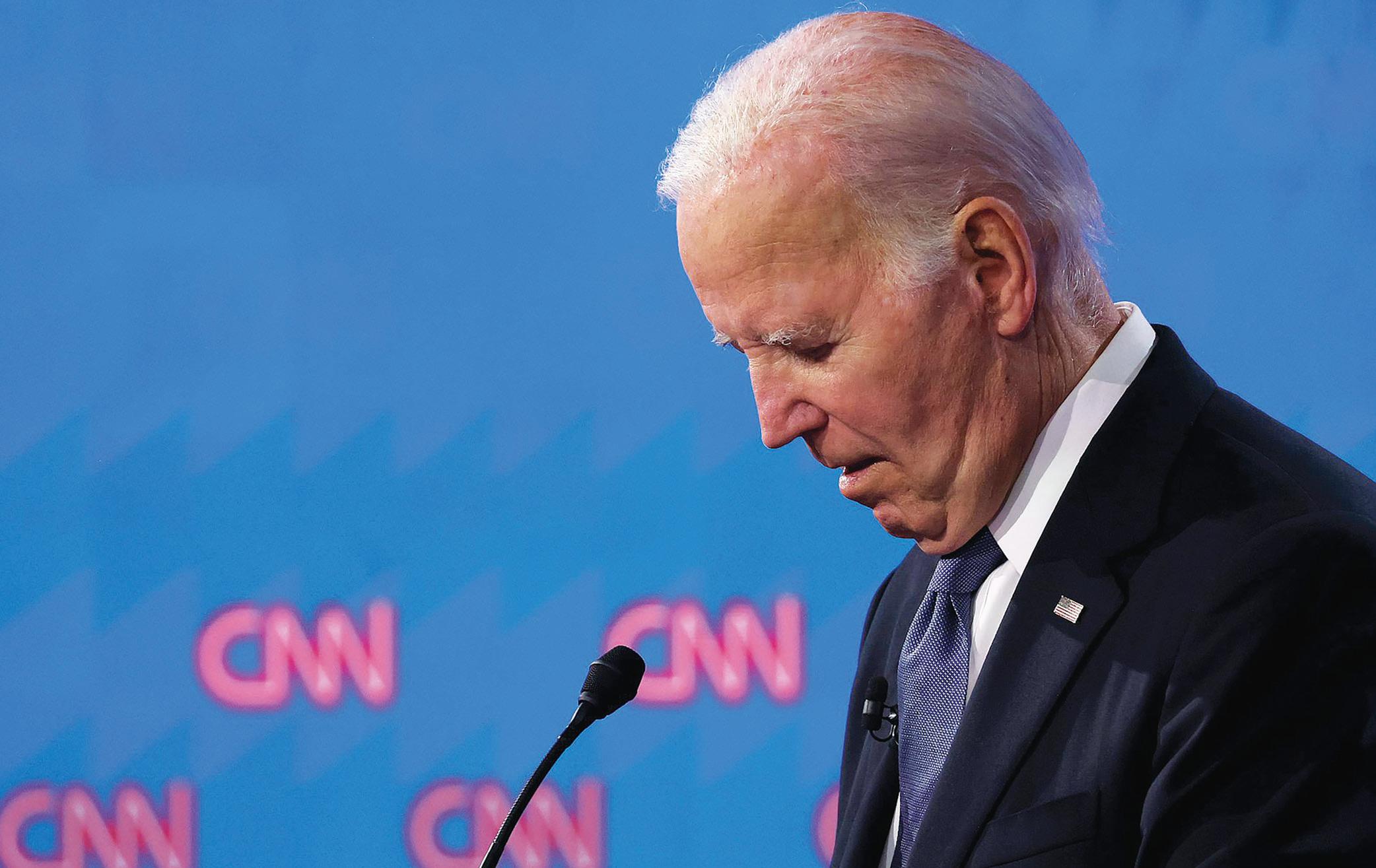
Why are journalists obsessed with Biden’s age? It’s because they’ve finally found an interesting election story
By Jacob L. Nelson Associate Professor of Communication, University of Utah
Since President Joe Biden’s disastrous presidential debate on June 27, 2024, election news coverage has focused on one question: Will he remain in the race?
This focus has been apparent to even the most casual of news consumers.
Journalist Jennifer Schulze observed that, as of the morning of July 5, the New York Times had published nearly 200 pieces on Biden’s debate performance, comprising 142 news articles and 50 opinion pieces.
In comparison, the historian Heather Cox Richardson wrote that Trump was covered in only 92 stories during that same period.
“Although Trump has frequently slurred his words or trailed off while speaking and repeatedly fell asleep at his own criminal trial,” Richardson pointed out,
“none of the pieces mentioned Trump’s mental fitness.”
As the flood of reporting continues on whether or not Biden will or should remain as the Democratic Party’s presidential nominee, members of the public have been asking a different question: How did all the journalists get on the same page so quickly?
The intensity with which journalists have been reporting on this story and, more importantly, the consistency with which journalists have been framing it, have led some to wonder if the news media as a whole is on a crusade to end Biden’s campaign.
Some think that journalists and newsroom managers are conspiring to bring Biden down as a means to increase the odds of defeating Donald Trump, whom they see as an existential threat to American democracy.
Others think journalists are unfairly focused on Biden’s age out of some warped sense of covering “both sides,” despite the fact that, from their perspective, Trump’s
debate performance was filled with “lies, hyperbole, bigotry, ignorance, and fear mongering.”
There is a far simpler explanation for why news coverage surrounding Biden’s debate performance looks the way it does. Journalists want to do stories that the public will find valuable and that their audiences will find interesting.
The Biden story is both.
News values, customs and sources
At a moment of deep distrust in journalism, there exists a widespread belief that journalists present the news in biased and overly sensational ways.
People who detect political bias in the news assume journalists are trying to push an unsuspecting public to embrace certain political views and reject others. Those who detect sensationalism in the news assume journalists – and news organization owners – care more about making money from audience attention than the accuracy
or quality of their reporting. Journalism skeptics who have been observing the coverage after the debate have consequently concluded that journalists are trying to turn the public against Biden so that he drops out of the race.
Former journalism professor Dan Gillmor, for example, recently wrote that The New York Times “has been on a campaign to make sure Joe Biden won’t have another term in the White House.” Yet studies of journalists’ values and practices tell a different story.
First, when it comes to reporting, journalists value sudden turns of events – also known as “timeliness.” They especially value those that unfold in a very public way – known as “spectacle.” The debate offered both. Until then, journalists and the public alike hadn’t regularly monitored or covered Biden’s age, other than a few notable outlets, such as The Wall Street Journal. The debate offered a live
By Ashleigh Fields
After the June 27 presidential debate, viewers grew concerned with President Joe Biden’s ability to fulfill his duties as commander-in-chief for a second term. In response, Gov. Kathy Hochul (D-NY), Wes Moore (D-MD), and Tim Walz (D-MI) met at the White House on July 3 to discuss Biden’s future as the Democratic nominee. Afterward, the group of three pledged their unwavering support to Biden. Moore, the nation’s sole Black governor, said the choice for November was clear after the meeting. “The president is our nominee, the president is our party leader and he told us back there that he is in this to win this,” Moore shared. “For the people who are concerned, I just want to be very clear, come November we’ve got a binary choice,” he later added. “The binary choice is between someone who has continually delivered for us, our states, and the people of our states and someone whose vision for the future of our country is downright dangerous.”
Walz (D) was the first to speak in favor of the president after the meeting. “Obviously we, like many Americans, are
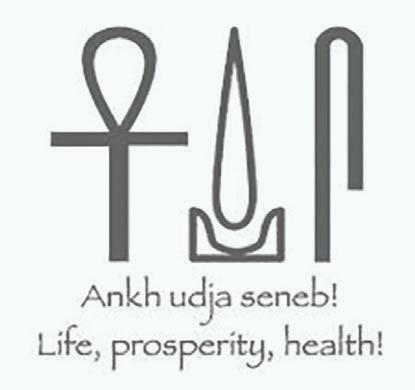

worried because of the threat of a Trump presidency. It’s not theoretical for Governors, we’ve served when Donald Trump was president. And the threats to our nation were real,” Walz explained. He compared the two leaders in terms of their ethics and morale. “A Trump presidency was chaos destruction, a Biden presidency was dealing with COVID, using the science, investing in infrastructure, and working to the middle class,” Walz continued. The other representatives agreed, denying claims about the president’s mental state. “We feel very confident in his abilities, we talked about the
plan and how he’s going to be very focused on issues that matter to Americans, and I felt very confident coming out of this meeting,” Hochul shared. Over the past few months, the Biden-Harris campaign has worked to ease the minds of voters. A week after the debate screened, Biden was interviewed by ABC’s George Stephanopolus, Earl Ingram of Civic Media Network, and Andrea Lawful-Sanders on WURD’s The Source in Philadelphia, Pennsylvania’s only Black-owned talk radio station. Lawful-Sanders admitted questions were planted by the Biden Harris campaign. Once the news
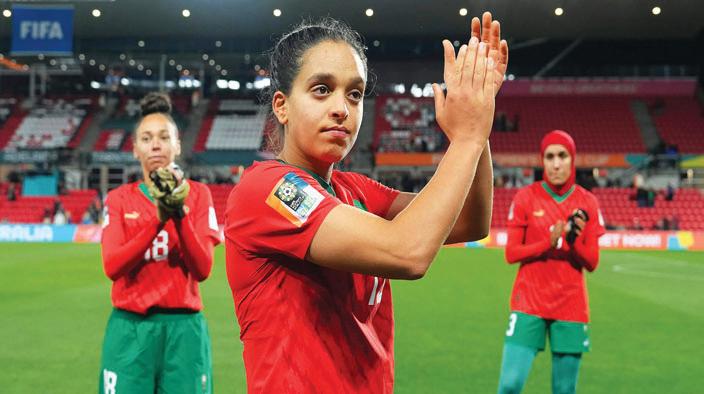
broke, campaign staff said they would no longer suggest questions to interviewers. Sara Lomax, president and CEO of the Philadelphia-based station released a statement mentioning the act, “violates our practice of remaining an independent media outlet accountable to our listeners.” As Biden continues to campaign, he is using one slogan to describe an honest character. “I know I’m not a young man. I don’t walk as easy as I used to. I don’t speak as smoothly as I used to. I don’t debate as well as I used to, but I know what I do know — I know how to tell the truth,’ the president has continually professed after the debate.
By Lauren Victoria Burke, NNPA Newswire Contributor
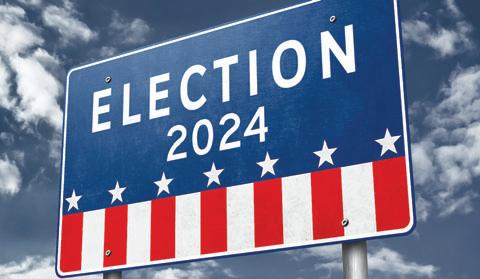

By Annabel Kamalu Contributing Writer
On June 10, 2024, the Brooklyn’s Park City Council meeting featured the Juneteenth and Dr. Yang Dao proclamations, a censure discussion against Maria Tran, and an introduction of new employees.
Juneteenth Celebration and Dr. Yang Dao Proclamations On June 10, 2024, Brooklyn Park’s Juneteenth planning team and Mayor Winston Hollies declared June 19th as Juneteenth Celebration Day. The proclamation honored the end of slavery and recognized the contributions of the 29.5% of Brooklyn Park residents as stated in the
By Annabel Kamalu Contributing Writer
On June 10, 2024, the Brooklyn Center City Council discussed PFAS (Per-Poly-fluoroalkyl substances) in the city’s drinking water. Elizabeth Heyman, the director of public works at Brooklyn Center and Dr. Meghan Brockman, a consultant from Bolton & Menk, Inc, led the presentation.
What Are Per-PolyFluoroalkyl Substances? According to the presentation, PFAS are manmade chemicals with over 14,000 formulas, known for their resistance to water, oil, and high temperatures (up to1000 degrees Celsius). They are found in items such
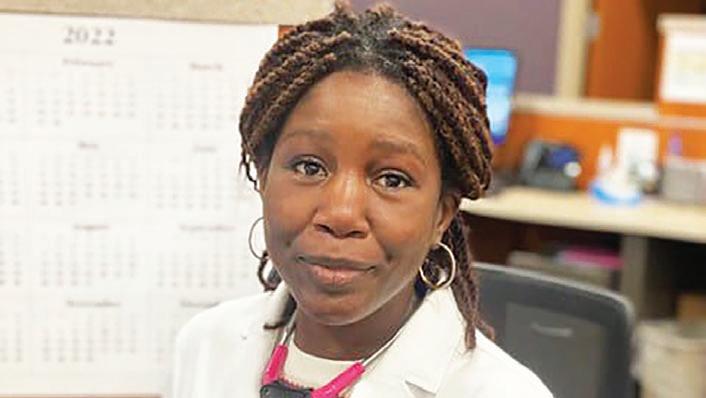
United States Census Bureau of African descent. As mentioned during the proclamation, it is also to recognize and celebrate the many contributions, diverse cultures, and extensive history of Africans/African Americans to this nation and the Brooklyn Park community.
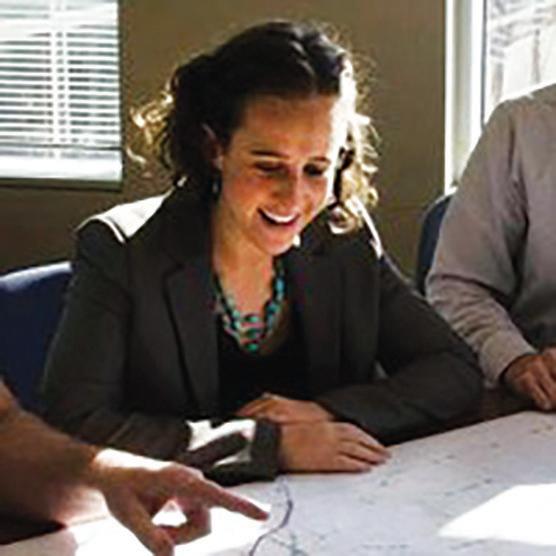
By Chris Meglio and Maddie Gonzales
The Twin Cities on Tuesday became the seventh city in the country to host an economic summit for Asian-American, Native Hawaiian and Pacific Islander communities with federal resources under President Joe Biden’s “Investing in America” agenda.
Held at Metropolitan State University in St. Paul, the event drew a large crowd and focused on linking immigrants with federal support to promote economic growth and inclusivity. Similar summits have been held in Philadelphia, Chicago, Seattle, New York City, Honolulu and Atlanta.
U.S. Rep. Ilhan Omar, D-5th District, and her family arrived in Minnesota when they immigrated from Somalia and Kenya nearly 30 years ago. Elected to the House in 2018, she hopes to provide the next generation of immigrants with “great opportunities to achieve the American dream.”
“I’m glad that folks that are not from Minnesota have the opportunity today to be here with us to see the opportunities that Minnesota offers to take
By Maddie Gonzales
Editor’s note: This story has been updated with comments from the Minnesota Department of Transportation.
Our Streets hosted a Rethinking I-94 rally last week in Minneapolis that brought together a coalition of community members, activists, and public officials advocating for transformative changes to the I-94 corridor.
At the event, Yasmin Hirsi, Advocacy Coordinator at Our Streets, emphasized the need for a comprehensive approach that prioritizes community well-being and equitable infrastructure. Hirsi spoke of negative impacts of I-94 has on public health, neighborhood economies, and social cohesion. She also read
lessons from us that can be implemented in which we continue to thrive and utilize every opportunity that we have to create a more inclusive and welcoming society,” Omar said.
The event was hosted in partnership with several federal agencies, including the U.S. Small Business Administration and the U.S. Department of the Treasury, as well as the National Asian and Pacific Islander American Chamber of Commerce and Entrepreneurship and state and local leaders.
United States Trade Representative Katherine Tai and Deputy SBA Administrator Dilawar Syed were among the officials who attended.
“This is one area where the growth and the development of [the community], economically and politically, and its leaders across the board is really strong,” Tai said.
“It’s a part of pushing ourselves to leave the comfort of Washington to come out and connect with our fellow Asian Americans, Native Hawaiians, and Pacific Islanders and to learn and educate us on how we can make our policies more responsive and more effective.” Participants could
a statement from Minneapolis City Council member Robin Wonsley supporting the Twin Cities Boulevard project, which calls for a shift from car-centric infrastructure to investments in public transit, pedestrian, and cycling-friendly alternatives.
“I-94 runs through Ward 2, and my residents are some of those who bear the disproportionate impacts of the highway,” Hirsi read from the Council Member Wonsley’s statement. “Our public health, our neighborhood economies, and our social fabric are harmed every single day by the highway. That’s why I consistently supported the Twin Cities Boulevard and the vision for a multimodal corridor that invests in healthy, safe, equitable, and thriving communities.”
A spokesperson with MnDOT told MinnPost via
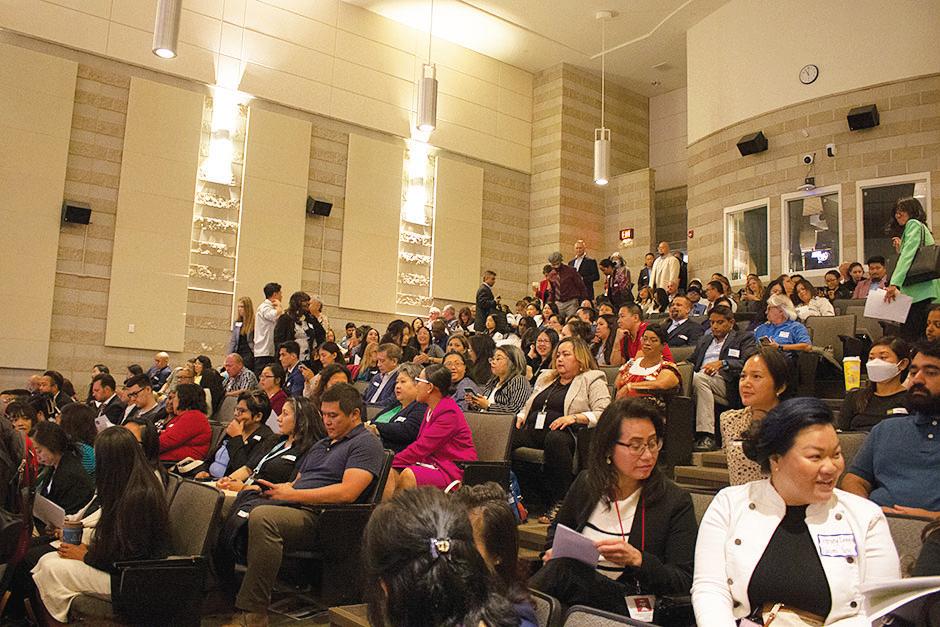
gather materials at several tables that were set up about various programs or companies.
White House leaders and government figures spoke to the summit attendees in the auditorium, sharing ways immigrants can access federal jobs, grants and programs.
The Minnesota
email that two of the proposed alternatives shared in 2023 included an at-grade roadway.
“This alternative most resembles the so-called Twin Cities Boulevard concept promoted by Our Streets,” said MnDOT spokesperson Ricardo Lopez.
The rally underscored the historical injustices associated with highway construction, particularly the displacement of low-income and minority communities. Hirsi drew parallels to the Civil Rights era, stressing that highway projects have long reinforced racial segregation and economic inequality by destroying neighborhoods and displacing families, particularly in Black and immigrant communities.
“True progress isn’t measured solely by the number of lanes or the speed of traffic but by the health, prosperity, and equity of our communities,” Hirsi stated.
Speakers at the rally
summit saw one of its biggest turnouts in attendance compared to previous summits, primarily with its target group in the Asian-American community.
“Today’s summit is actually the result of a recommendation that our President’s Advisory Commission made to the
president, encouraging the administration to ensure that we could better connect our local communities, small business owners, entrepreneurs, and our community leaders with critical federal resources to ensure that they have the capital the the information and the resources that they need to thrive,” said
Krystal Ka’ai, executive director for the White House Initiative on Asian Americans, Native Hawaiians and Pacific Islanders. In addition to helping immigrants, the event was also designed to provide information to local businesses who can then inform others about these opportunities.
Syed said past events brought the community together through learning opportunities from the government. He noted that the Biden-Harris Administration would need to wait several years to accurately assess the effectiveness of its summits, as communities require time to become reliable indicators of the impact.
“This is why we’re here, to talk about this and make sure that in the long term we can have a measurable impact,” Syed said. “We want local leaders to step up. Make sure that they are connecting with our local population and local entrepreneur communities.”
Chris Meglio Chris is a reporting intern with MinnPost.
Maddie Gonzales Maddie is an audience development and reporting intern with MinnPost.
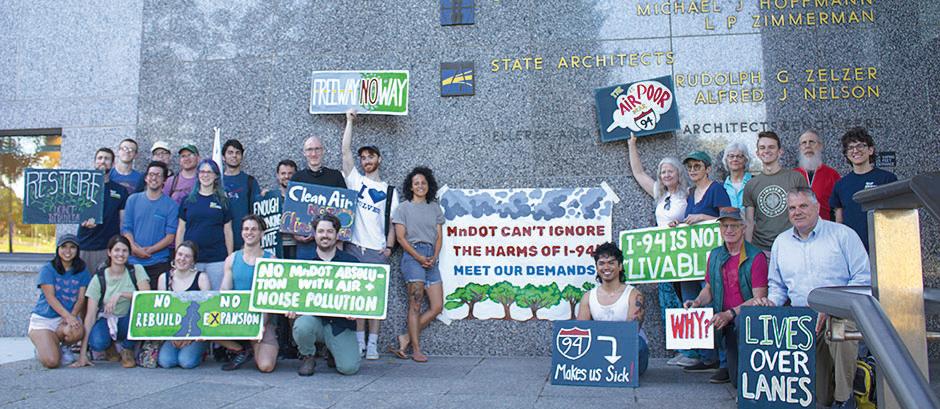
also voiced their concerns about the current plans for the I-94 corridor. Nathan Kroschel from the I-94 Rail Coalition advocated for including a regional rail system in the project, emphasizing the unique opportunity to create a grade-separated transit corridor connecting the Twin Cities and beyond.


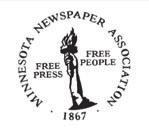



Ahead of last week’s rally, Streets.mn published a piece from Seth Bose advocating for the building of a rail system connecting the downtowns of Minneapolis and St. Paul. “MnDOT issued a Rethinking I-94 survey on the presented projects, with an optional write-in response. The number one write-in suggestion was rail, with a total of 359 responders out of roughly 3,500,” Bose wrote.
Community member
Ted Ryan spoke of the inefficiencies and dangers of the current highway system, urging MnDOT to consider rail and bus rapid transit in the I-94 corridor. He argued I-94, as it exists today, is not the most efficient use of space in that area and that expanded rail and bus transit would better serve the community.
“There are so many other opportunities for public transportation because we know that I-94 is not an efficient form of transportation. It’s an incredibly expensive form of transportation, it’s an incredibly dangerous form of transportation, and it doesn’t serve our people in the metro area well,” said Ryan.
Hirsi also expressed concerns about MnDOT’s current investments.
“We did learn a few days ago that the current draft for the State Transportation Improvement Plan includes an $80 million investment being planned to go towards rehabilitating bridges along the I-94 corridor,” she mentioned. “This $80 million investment towards the highway before any decision has been made about its future is really concerning. We don’t want this to be the reason they justify keeping this highway.”
Lopez said there is not yet a cost estimate for any of the proposed ideas nor has funding been identified for construction while they work through evaluating alternative plans. “A preferred alternative will be identified
later in the environmental review process,” Lopez wrote.
The rally concluded with a call to action for MnDOT to listen to the communities most impacted by the project. Hirsi urged for proactive antidisplacement policies and genuine community engagement in the decision-making process. Ryan echoed this sentiment, stressing the opportunity for a transformative change.
“The Reconnect Rondo, the Twin Cities Boulevard, the potential for rail or bus— there is a ton of space available for us to give it back to the community,” Ryan said. “This could be the beginning of reparations for many of those communities. We should be demanding more, and this is an opportunity to do so.” Lopez said public feedback through comment has been “incorporated into the Purpose and Need document, and helped shape the Livability Framework.”
“We appreciate the deep community interest and involvement as we work to plan the future of this vital corridor,” Lopez said in a statement to MinnPost. “MnDOT is considering a wide range of alternatives for the future of this corridor that were developed in partnership with federal, state and local governments, as well as countless technical experts and feedback from the community. In contrast to the original creation of Highway 94, MnDOT is committed to continuing with our communitybased approach focused on reconnecting neighborhoods and ensuring community members have a meaningful voice in transportation decisions that affect their lives. We look forward to ongoing engagement from all members of the community as we continue planning for our future project.” Maddie Gonzales Maddie is an audience development and reporting intern with MinnPost.
3
opportunity for the world to see firsthand why there have been concerns about electing an 81-year-old to a second term.
Second, journalists depend on sources for their reporting. Unsurprisingly, as soon as Biden’s halting debate performance began, political reporters began hearing from panicked insiders, who appear to have jump-started the “replacing Biden” discussion.
As a scholar who explores the relationship between journalism and the public, I believe these sources
are venting to journalists as a way to keep the spotlight on this news story. That’s a major part of the reason for this coverage, which each day seems to bring with it fresh quotes, leaks and scoops about Biden’s age from people involved in Democratic Party politics.
What the public wants vs. needs
Of course, journalists do not simply transcribe quotes and distribute them to the public. They and their editors decide whether – and how much – to cover a story.
As my own research has shown, journalists try to strike a balance between what the public “wants” and what the public “needs” –sometimes known within journalism as giving the
audience their “vegetables” along with their candy. Most journalists and their editors care deeply about producing valuable news that will galvanize the public around a cause and lead to a change in public policy. Why else would they work in such an unstable and poorly paid profession?
Yet journalists also assume that these “important” news stories are rarely going to be as popular as more entertaining fare.
The current Biden story is different. Until now, interest in the presidential election has been conspicuously low. While subscriptions to The New York Times skyrocketed following Trump’s election in 2016, the public has been far
less interested in following the news during this election cycle. An April NBC News poll showed that, in 2024, interest in the presidential election had hit a nearly 20-year low. The debate offered something that had been missing from the election so far: a sense of uncertainty. That’s because the story itself has everything journalists want. It’s interesting, timely and easily reported using various sources. As long as there are incremental developments to report on, then being interesting, timely and easily reported will keep a story in the news for a long time, as seen with the ongoing coverage surrounding the coronarivus pandemic. Plus, audiences are invested in it. And no one knows how it will turn out.
It’s a huge story
Until Biden drops out or it becomes clear that he will remain the party’s nominee, Americans will continue to be inundated with news coverage about everything from his campaigning to Democratic donors’ maneuvering to get him out or keep him in the race to investigations into the extent to which Biden’s age has been affecting his performance as president so far. Americans will also continue to see hand-wringing about this coverage, specifically that it comes at the expense of other coverage or that it runs the risk of affecting the very story it’s meant to illuminate. As this unfolds, news consumers would all do well to keep in mind that this reporting
is unlikely the result of a conspiracy among journalists and their managers to change the outcome of the election. It is likelier the result of a consensus among political journalists and their sources that this is an important and fascinating story. It’s certainly one I intend to follow. Jacob L. Nelson does not work for, consult, own shares in or receive funding from any company or organization that would benefit from this article, and has disclosed no relevant affiliations beyond their academic appointment. This article is republished from The Conversation under a Creative Commons license.
united under Hakeem Je
ain’t going to be no
3
proclaimed June 15, 2024, as Dr. Yang Dao Day in Brooklyn Park, honoring Dr. Yang Dao for his significant contributions as a
other Democratic candidate. It’s going to be Biden!” With control of the U.S. House and Senate on the line, the control of committees and who chairs them is connected to the Democrats’ success on Election Day. Rep. Waters’ sentiment is possibly
Hmong scholar, musician, and diplomat. Dr. Dao has served on Brooklyn Park’s Multicultural Advisory Committee for over seven years, inspiring the Hmong community worldwide.
Council Member Maria Tran’s Censure
On January 31, 2024, Mayor Winston and the city
damage, reproductive issues, and chronic toxicology from contaminated drinking water.
Regulations and Standards
the result of what she has heard from her working class constituents Black and brown. Much like Waters, Virginia State Senator L. Louise Lucas was clear in a message on social media on July 6. “I’m riding with Biden, just like every other
manager received a complaint about Council Member Maria Tran of the West District. After an independent investigation, the City Council met on May 20, 2024, and agreed to censure Tran for violating the city’s respectful workplace policy and Brooklyn Park’s code of conduct. After Mayor Winston
damn Democrat I’ve talked to. Get the hell off Twitter (I know that means a lot coming from me ) and get the hell off your phone. Let’s get to work to save our democracy!!” Sen. Lucas who represents Black blue collar Portsmouth, Virginia, wrote. Former CBC Chair
read the censure, Council Member XP Lee of East District stated that the censure does not prohibit Council Member Tran from acting as the Council Member for West District at the council, talking to the residents, and getting their input on their issues. However, her behavior will be keenly monitored as part of the censure, he said.
Joyce Beatty also attending EssenceFest, told a reporter that she was tired of the public criticism of Democrats against their presumptive nominee for President. “I don’t think for Democrats so close to the majority, so close and being so
Employees
ries, we shouldn’t be going public, we shouldn’t be going rogue against our own President,” Rep. Beatty said.
new regulations for PFAS.
Notably, Brooklyn’s Centre drinking water meets all the current federal standards for PFAS in drinking water including the new EPA regulations. As stated in the presentation, PFAS exposure is linked to high cholesterol, cancer, low birth weight, liver
The Environmental Protection Agency (EPA) regulates PFAS in drinking water with the maximum contaminant limits being:
PFOS
(Perfluorooctane Sulfonic Acid) = 4 ng/L
PFOA
1.0: (Below or at allowable risk of 1). According to the EPA, the Health Index (HI) comprises a sum of fractions. Each fraction compares the level of each PFAS measured in the water to the highest level determined not to have a risk of health effects
and performing statistical analysis to detect any potential increase or decrease in PFAS concentrations. In response to Council Member Jerzak, Dr. Brockman discussed emerging PFAS treatment technologies. She stated that; although no large systems like Brooklyn Center’s currently use these technologies, methods such as form fractionation and hightemperature incineration (up to 1000 degrees Celsius) can treat PFAS-concentrated streams. “I don’t care what anybody says
(Perfluorooctanoic acid) = 4ng/L Health Index (HI) of
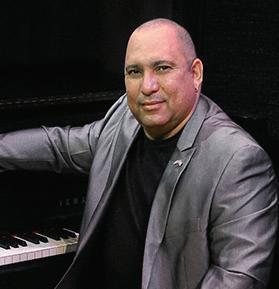
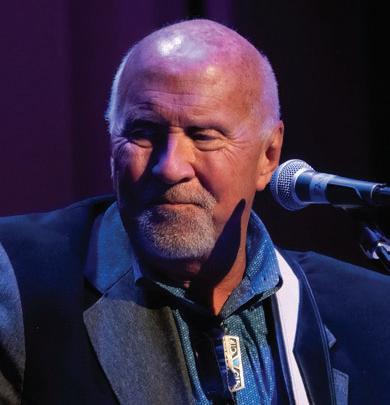


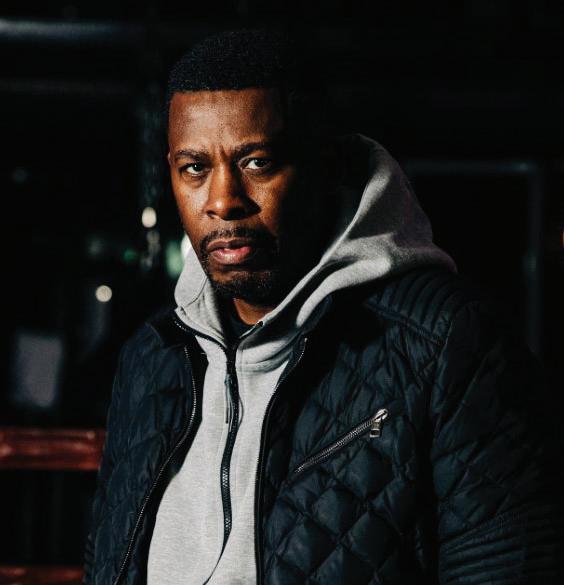
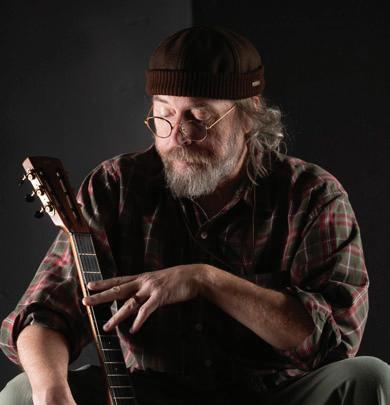
Samples taken by Brooklyn Centre staff from the Brooklyn Center water treatment plant meet all current EPA standards for PFAS. As reported during the meeting, the plant does not remove PFAS due to the need for specialized
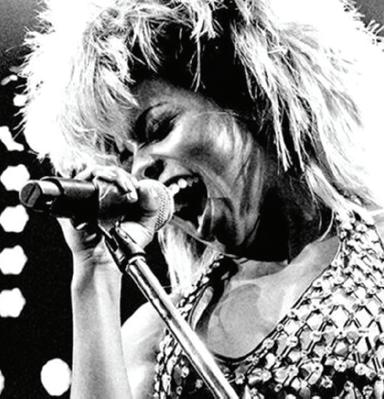
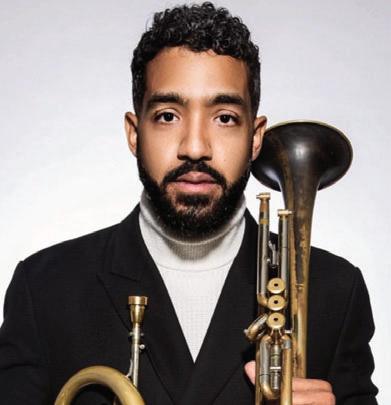
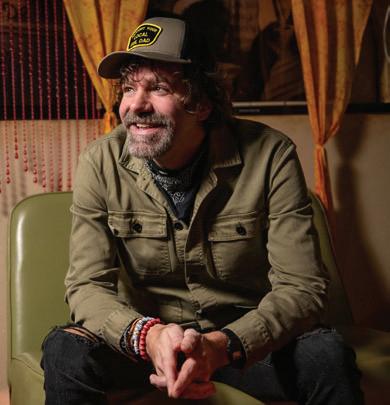

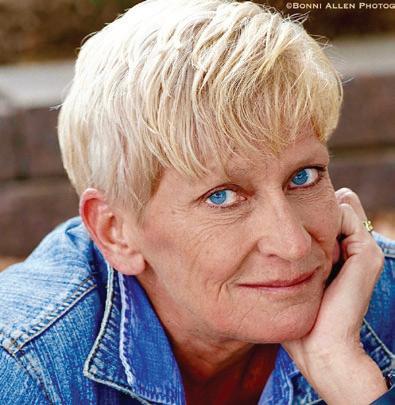

technology. Below are the recommended responses from the tested samples to keep up with the requirements; Continued testing Continued to monitor for funding opportunities Keep PFAS treatment an option in future planning
Other ongoing efforts include: Participation in the 3M/DuPont lawsuit. Transparency via the city’s PFAS webpage and
The Council welcomed new employees introduced to the fire department during the meeting; Jamie Vincent, Program Assistant, previously worked at LendSmart Mortgage. She has 20 years of experience in diverse fields including mortgage, television, and fitness. Dan Johnson Powers, Emergency Management Coordinator, previously with United Health Group’s global crisis management team, has over 20 years of experience in emergency management across higher education, healthcare, private industry, and government positions.
newsletters. Allocation of settlement funds based on PFAS concentration and water usage
Errors in Sampling Dr. Brockman addressed Council Member Kragness’s concerns about sampling errors, explaining that quarterly sampling by the Department of Health helps track PFAS levels without introducing significant data errors. Also, the EPA accounts for variations by averaging quarterly samples


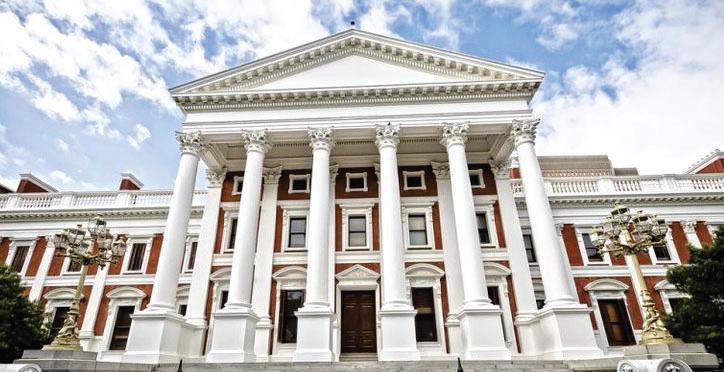
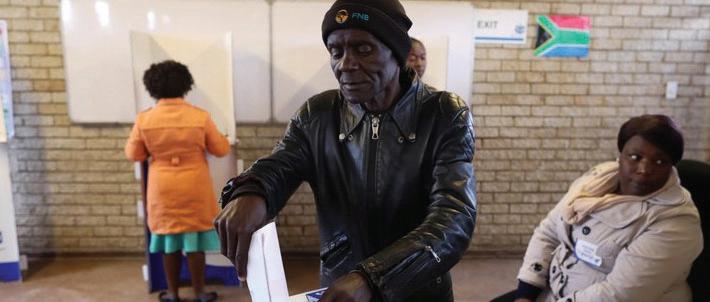
¿Qué es lo que realmente se avecina para lo que será el primer gobierno de coalición nacional de Sudáfrica? ¿Será un gobierno dirigido tanto por distrito o habrá otro camino?
Crédito de la imagen: IOL News
Sudáfrica se encuentra en un momento crucial mientras lidia con las secuelas de las elecciones del 29 de mayo, navegando por un laberinto de legados históricos, discordia ideológica e imperativos económicos. Los recientes resultados electorales han preparado el escenario para un complejo baile de la política de coalición entre el Congreso Nacional Africano (ANC) y la Alianza Democrática (DA),

What truly lies ahead for what national coalition government?
Will it be a government led both by the ANC and the DA or will there be another path? Image credit: IOL News
South Africa stands at a pivotal moment as it grapples with the aftermath of the May 29 elections, navigating a labyrinth of historical legacies, ideological discord, and economic imperatives. The recent electoral outcomes have set the stage for a complex dance
remodelando el panorama político de la nación. La advertencia de Fitch Ratings sobre los posibles de Sudáfrica después de las elecciones subraya la gravedad de la situación. En su informe del 6 de abril de 2024, Fitch destacó las incertidumbres en torno al resultado de las elecciones, para Sudáfrica siguen siendo estructurales que incluyen un bajo potencial de crecimiento, un alto desempleo y unas la urgencia de una acción económica decisiva a raíz de la incertidumbre electoral. Dentro de los círculos del ANC, han surgido voces discordia interna sobre las perspectivas de la coalición. Lindiwe Sisulu, un peso pesado del ANC y miembro del Comité
Ejecutivo Nacional (NEC), advirtió contra una coalición acuerdo DA-ANC sería un Pindula. Las reservas de Sisulu subrayan las tensiones internas dentro del liderazgo del CNA, negociaciones de la coalición. El fracaso del CNA para asegurar una mayoría absoluta en el Parlamento por primera vez desde 1994 ha puesto la política de la coalición en primer plano. Con el ANC obteniendo el 40,18 % de los votos electorales, junto con el aparición del Partido uMkhonto weSizwe (MKP) de Jacob Zuma con el 17,4 %, las formaciones de coalición son imperativas. Los informes que sugieren la contemplación por parte del presidente del ANC, Cyril han provocado un debate dentro
IOL, tal asociación implicaría posiciones estratégicas en el gobierno y las legislaturas, lo que señalaría un posible cambio en la dinámica del poder. Sin embargo, el espectro de las animosidades históricas cierne en grandes, lo que complica las negociaciones de coalición. La ideología de liberación del CNA, arraigada en la lucha contra el apartheid, contrasta marcadamente con la orientación liberalconservadora del DA. Los controvertidos comentarios de por la BBC, han reavivado las tensiones raciales, exacerbando
aspectos del colonialismo profundas quejas históricas
que siguen dando forma al panorama político de Sudáfrica. El abismo ideológico entre el ANC y el DA se diferentes posturas sobre el empoderamiento económico negro de base amplia (BBBEE) y varias otras políticas que el ANC tiene en vigor, con las que acuerdo. Mientras que el ANC mecanismo para corregir las injusticias históricas y promover la inclusión económica, la ideológicas. Esta divergencia ideológica, como destaca la Fundación Brenthurst, subraya los desafíos de la formación de coaliciones en la Sudáfrica posterior al apartheid. A medida que Sudáfrica navega por este turbulento terreno posterior a las elecciones, los observadores e inversores internacionales
monitorean de cerca los acontecimientos, sopesando los riesgos y recompensas potenciales de las formaciones de Chatham House subraya perspectivas divergentes dentro con inversores cautelosamente optimistas sobre las perspectivas de un gobierno de coalición. En conclusión, la encrucijada política de Sudáfrica legados históricos, tensiones ideológicas y exigencias económicas. A medida que el CNA y el DA lidian con las negociaciones de la coalición, las decisiones tomadas en los próximos días no solo darán forma a la trayectoria de la nación, sino que también repercutirán a nivel mundial, democracia y la gobernanza en el siglo XXI.
O que está realmente por vir para o que será o primeiro governo de coalizão nacional da África do Sul? Será um governo dirigido tanto pelo ANC como pelo procurador distrital ou haverá outro caminho? Crédito da imagem: IOL News A África do Sul está em um momento crucial enquanto lida com as sequelas das eleições de 29 de maio, navegando por um labirinto de legados históricos, discórdia ideológica e imperativos econômicos. Os recentes resultados eleitorais prepararam o cenário para uma dança complexa da política de coalizão entre o Congresso Nacional Africano (ANC) e a Aliança Democrática (DA), remodelando o cenário político
of coalition politics between the African National Congress (ANC) and the Democratic Alliance (DA), reshaping the nation’s political landscape.
Fitch Ratings’ warning of potential risks to South election underscores the gravity of the situation. In their April 6, 2024, report, Fitch highlighted uncertainties surrounding the election outcome, stating, remains challenging, with structural constraints including low growth potential, high unemployment, and weak public
decisive economic action in the wake of electoral uncertainty.
Within ANC circles, dissenting voices have emerged, coalition prospects. Lindiwe
da nação. O aviso da Fitch Ratings sobre os possíveis riscos para Sul após as eleições sublinha a gravidade da situação. Em seu relatório de 6 de abril de 2024, Fitch destacou as incertezas em torno do resultado das eleições, para a África do Sul continuam a estruturais que incluem baixo potencial de crescimento, alto
acção económica decisiva na Dentro dos círculos do ANC, surgiram vozes discórdia interna sobre as perspectivas da coalizão. Lindiwe Sisulu, um peso pesado do ANC e membro do (NEC), advertiu contra uma
Sisulu, an ANC heavyweight and National Executive Committee (NEC) member, cautioned against an ANC-DA
as reported by Pindula. Sisulu’s reservations underscore the internal tensions within the ANC leadership, further complicating coalition negotiations. The ANC’s failure to secure an outright majority in since 1994 has thrust coalition politics to the forefront. With the ANC garnering 40.18% of the electoral vote, alongside the DA’s 21.80%, and the emergence of Jacob Zuma’s uMkhonto weSizwe Party (MKP) with 17.4%, coalition formations are imperative. Reports suggesting ANC President Cyril Ramaphosa’s
coalizão ANC-DA, alertando:
Pindula. As reservas de Sisulu sublinham as tensões internas dentro da liderança do CNA, o que complica ainda mais as negociações da coalizão. O fracasso do CNA em assegurar uma maioria absoluta no Parlamento pela primeira vez desde 1994 colocou a política da coalizão em primeiro plano. Com o ANC obtendo 40,18% dos votos eleitorais, juntamente com 21,80% do procurador distrital, e o surgimento do Partido uMkhonto weSizwe (MKP) de Jacob Zuma com 17,4%, as formações de coalizão são imperativas. Relatórios que sugerem a contemplação do presidente do ANC, Cyril
distrital provocaram um debate acordo com a IOL, tal parceria
sparked debate within ANC ranks. According to IOL, such a partnership would entail the DA assuming strategic positions in government and the legislatures, signaling a potential shift in power dynamics. However, the spectre of historical animosities and large, complicating coalition negotiations. The ANC’s liberation ideology, rooted in the struggle against apartheid, contrasts sharply with the DA’s liberal-conservative orientation. Controversial remarks by former DA leader Helen Zille, as reported by the BBC, have reignited racial tensions, further exacerbating the ANCDA ideological divide. Zille’s
underscores the deep-seated
implicaria que o procurador distrital assumisse posições estratégicas no governo e nas legislaturas, o que sinalizaria uma possível mudança na dinâmica do poder. No entanto, o espectro das animosidades históricas e em grandes, o que complica as negociações de coalizão. A ideologia de libertação do CNA, enraizada na luta contra o apartheid, contrasta marcadamente com a orientação liberal-conservadora do DA. Os comentários controversos da ex-líder do procurador distrital Helen Zille, conforme relatado pela BBC, reavivaram as tensões raciais, exacerbando ainda mais a divisão ideológica do ANC-
sublinha as profundas queixas históricas que continuam a moldar o panorama político da
historical grievances that continue to shape South Africa’s political landscape. The ideological chasm between the ANC and the DA is further accentuated
Broad-Based Black Economic Empowerment (BBBEE) and several other policies that the ANC has in place, that the DA does not agree with. While the ANC champions BBBEE as a mechanism for redressing historical injustices and promoting economic inclusion, the DA’s lukewarm stance
This ideological divergence, as highlighted by the Brenthurst Foundation, underscores the challenges of coalition-building in post-apartheid South Africa.
As South Africa navigates this turbulent post-election terrain, international observers and investors closely monitor developments, weighing the potential risks and rewards of coalition formations. A report by Chatham House underscores divergent perspectives within the ANC and the DA, with investors cautiously optimistic about the prospects of a coalition government. In conclusion, South Africa’s political crossroads legacies, ideological tensions, and economic exigencies. As the ANC and the DA grapple with coalition negotiations, the choices made in the coming days will not only shape the nation’s trajectory but also the contours of democracy and governance in the 21st century.
África do Sul. O abismo ideológico entre o ANC e o DA é ainda mais acentuado por suas diferentes posições sobre o empoderamento econômico negro de base ampla (BBBEE) e várias outras políticas que o ANC tem em vigor, com as quais o procurador distrital não concorda. Enquanto o ANC defende a BBBEE como um mecanismo para corrigir as injustiças históricas e promover a inclusão econômica, a postura morna do procurador ideológica, como destaca a Fundação Brenthurst, sublinha coalizões na África do Sul pósapartheid. À medida que a África do Sul navega neste terreno turbulento após as eleições, observadores e investidores internacionais monitoram
de perto os acontecimentos, pesando os riscos e recompensas potenciais das formações da Chatham House sublinha perspectivas divergentes dentro do ANC e do procurador distrital, com investidores cautelosamente otimistas sobre as perspectivas de um governo de coalizão. Em conclusão, a encruzilhada política da África de legados históricos, tensões econômicas. À medida que o CNA e o DA lidam com as negociações da coalizão, as decisões tomadas nos próximos dias não só moldarão a trajetória da nação, mas também repercutirão globalmente, democracia e da governança no século XXI.
poids lourd de l’ANC et membre du Comité exécutif national (NEC), a mis en garde contre une coalition ANCDA-ANC serait un désastre », comme le rapporte Pindula. Les réserves de Sisulu soulignent les tensions internes au sein de la direction de l’ANC, compliquant encore davantage les négociations de coalition.
L’échec de l’ANC à obtenir une majorité absolue au Parlement pour la première fois depuis 1994 a propulsé la politique de coalition au premier plan. Avec l’ANC recueillant 40,18 % des voix électorales, aux côtés des 21,80
% du DA, et l’émergence du Parti uMkhontoweSizwe (MKP) de Jacob Zuma avec 17,4 %, la formation d’une coalition est impérative. Des rapports suggérant que le président de l’ANC, Cyril Ramaphosa, envisageait une « coalition douce » avec le DA ont suscité un débat au sein des rangs de l’ANC. Selon IOL, un tel partenariat impliquerait que le DA assume des positions stratégiques au sein du gouvernement et des législatures, signalant un changement potentiel dans la dynamique du pouvoir. Cependant, le spectre des animosités historiques et
Dimuqraadiga (DA), taas oo dib u qaabaynaysa muuqaalka siyaasadeed ee qaranka. Digniinta Fitch Ratings ee khataraha ka iman kara Koonfur Afrika doorashada ka dib waxay hoosta ka xariiqday culayska ay leedahay xaaladda.
ANC iyo DA labadaba mise waxaa jiri doona waddo kale? Xuquuqda sawirka: IOL News Koonfur Afrika waxay taagan tahay waqti muhiim ah oo ay la daalaa dhacayso natiijadii doorashadii 29-ka May, iyada oo ku socota shaybaadh dhaxal-gal ah oo taariikhi ah, arrimaha dhaqaalaha. Natiijadii doorashada ee dhawaan soo baxday waxay dejisay masraxa qoob ka ciyaarka siyaasadda isbahaysiga ee u dhexeeya xisbiga Qaranka Afrikaanka (ANC) iyo Isbahaysiga
compliquant les négociations de coalition. L’idéologie de libération de l’ANC, enracinée dans la lutte contre l’apartheid, contraste fortement avec l’orientation libéraleconservatrice du DA. Les propos controversés de l’ancienne dirigeante du DA, Helen Zille, rapportés par la BBC, ont ravivé les tensions raciales, exacerbant encore davantage la division idéologique entre l’ANC et selon laquelle « tous les aspects du colonialisme n’étaient pas négatifs » souligne les griefs historiques profondément enracinés qui continuent de
façonner le paysage politique de l’Afrique du Sud. entre l’ANC et le DA est encore accentué par leurs positions divergentes sur l’autonomisation économique généralisée des Noirs (BBBEE) et plusieurs autres politiques mises en place par l’ANC et avec lesquelles le DA n’est pas d’accord. Alors que l’ANC défend le BBBEE comme un mécanisme permettant de réparer les injustices historiques et de promouvoir l’inclusion économique, la disparités idéologiques. Cette divergence idéologique, comme
l’a souligné la Fondation la constitution d’une coalition dans l’Afrique du Sud postapartheid. Alors que l’Afrique du Sud traverse ce terrain postélectoral mouvementé, les observateurs internationaux et les investisseurs surveillent de près les développements, pesant les risques et les avantages potentiels de la rapport de Chatham House souligne des perspectives divergentes au sein de l’ANC et du DA, les investisseurs étant prudemment optimistes quant aux perspectives d’un
gouvernement de coalition. En conclusion, le carrefour politique de l’Afrique d’héritages historiques, de tensions idéologiques et d’exigences économiques. Alors que l’ANC et le DA s’attaquent aux négociations de coalition, les choix faits dans les prochains jours façonneront non seulement la trajectoire de la nation, mais auront également les contours de la démocratie et de la gouvernance au 21e siècle.
Je, ni nini hasa kinakuja kwa kile ambacho kitakuwa mara ya kwanza kwa serikali ya muungano ya kitaifa ya Afrika Kusini? Je, itakuwa serikali inayoongozwa na ANC na DA au kutakuwa na njia nyingine? Kwa hisani ya picha: IOL News Afrika Kusini iko katika wakati muhimu inapokabiliana na matokeo ya uchaguzi wa Mei 29, ikipitia kumbukumbu nyingi za kihistoria, mifarakano ya kiitikadi na masharti ya kiuchumi. Matokeo ya hivi majuzi ya uchaguzi yameweka jukwaa la ngoma tata ya siasa za muungano kati ya African National Congress (ANC) na Democratic Alliance (DA),
Warbixintoodii Abriil 6, 2024, Fitch waxay iftiimisay hubanti la’aanta ku xeeran natiijada doorashada, isagoo sheegay, ayaa weli ah mid adag, oo leh caqabado dhismeed oo ay ka mid yihiin kobac hooseeya, shaqo la’aan sare, iyo dhaqaalaha
Qoraalkan digniinta ahi waxa uu xoojinayaa degdegga ah ee tallaabo dhaqaale oo go’aan ah ka dib hubaal la’aanta doorashada.
Wareegyada ANC gudaheeda, codad diiddan ayaa ka soo baxay, kuwaas oo ka tarjumaya khilaafka gudaha ee rajada isbahaysiga. Lindiwe Sisulu, oo ah xubin ANC ah oo miisaan culus iyo Guddiga
ikitengeneza upya hali ya kisiasa ya taifa hilo. Onyo la Fitch Ratings kuhusu hatari zinazowezekana kwa wasifu wa mikopo wa Afrika Kusini baada ya uchaguzi linasisitiza uzito wa hali hiyo. Katika ripoti yao ya Aprili 6, 2024, Fitch iliangazia kutokuwa na uhakika kuhusu matokeo ya uchaguzi, ikisema, bado ni wa changamoto, kukiwa na vikwazo vya kimuundo ikiwa ni pamoja na uwezekano mdogo wa ukuaji, ukosefu mkubwa wa ajira, na fedha hii inaongeza udharura wa kuchukua hatua madhubuti za kiuchumi kutokana na kutokuwa na uhakika wa uchaguzi. Ndani ya duru za ANC, sauti zinazopingana zimeibuka, zikionyesha mfarakano wa ndani kuhusu matarajio ya muungano. Lindiwe Sisulu,
Fulinta Qaranka (NEC), ayaa ka digay isbahaysiga ANC-DA, DA-ANC wuxuu noqon doonaa Pindula. Sii qabsashada Sisulu waxay hoosta ka xariiqday xiisadda gudaha ee ka dhex jirta hoggaanka ANC, taasoo sii adkeynaysa wada xaajoodka isbahaysiga.
Ku guul dareysiga ANC in uu helo aqlabiyad toos ah baarlamaanka markii ugu horeysay tan iyo 1994-tii ayaa siyaasadda isbaheysiga ka dhigtay safka hore. Xisbiga ANC ayaa helay 40.18% codadka doorashada, marka lagu daro DA 21.80%, iyo soo bixitaanka xisbiga uMkhontoweSizwe ee Jacob Zuma (MKP) oo helay 17.4%, waxaa lama huraan ah samaynta isbahaysiga. Warar soo jeedinaya in madaxweynaha ANC Cyril Ramaphosa uu ku
ee DA ayaa dood ka dhex dhaliyay ANC. Sida laga soo xigtay IOL, iskaashiga noocan
mjumbe wa uzito wa juu wa ANC na Halmashauri Kuu ya Taifa (NEC), alionya dhidi ya muungano wa ANC-DA, ilivyoripotiwa na Pindula. Mashaka ya Sisulu yanasisitiza mvutano wa ndani ndani ya uongozi wa ANC, na hivyo kutatiza mazungumzo ya muungano. Kushindwa kwa ANC kupata wingi wa wabunge kwa mara ya kwanza tangu 1994 kumeweka siasa za muungano mbele. Huku ANC ikipata 40.18% ya kura za uchaguzi, pamoja na 21.80% za DA, na kuibuka kwa Chama cha Zuma (MKP) na 17.4%, muundo wa muungano ni muhimu. Ripoti zinazopendekeza kutafakari kwa Rais wa ANC Cyril Ramaphosa kuhusu
oo kale ah wuxuu keeni karaa in DA ay qaataan jagooyin istiraatijiyadeed ee dawladda iyo sharci-dejinta, taas oo muujinaysa isbeddel suurtagal ah ee dhaqdhaqaaqa awoodda. Si kastaba ha ahaatee, daawashada cadaawadda taariikhiga ah iyo khilaafyada afkaarta ayaa soo jiitamaya, taasoo adkeynaysa wadaxaajoodyada isbahaysiga. Fikirka xoraynta ee ANC, ee salka ku haya halganka lagaga soo horjeedo midab-takoorka, ayaa si weyn uga duwan jihada ee DA. Hadallada muranka dhaliyay ee hoggaamiyihii hore ee DA Helen Zille, sida ay BBCdu sheegtay, ayaa dib u soo celiyay xurguftii jinsiyadeed, taasoo sii xumaynaysa kala
DA. Caddaynta Zille ee ah
waxay hoosta ka xariiqaysaa cabashooyinka taariikhiga ah ee qotodheer ee sii wada qaabaynta
kumezua mjadala ndani ya safu za ANC. Kulingana na IOL, ushirikiano kama huo utahusisha DA kuchukua nyadhifa za kimkakati serikalini na mabunge, kuashiria mabadiliko yanayoweza kutokea katika mienendo ya mamlaka. Hata hivyo, wasiwasi wa chuki za kihistoria na mpasuko wa kiitikadi unajitokeza sana, na hivyo kutatiza mazungumzo ya muungano. Itikadi ya ukombozi ya ANC, iliyokita mizizi katika mapambano dhidi ya ubaguzi wa rangi, inatofautiana kwa kiasi kikubwa na mwelekeo wa kiliberali wa ya kutatanisha ya kiongozi wa zamani wa DA Helen Zille, kama ilivyoripotiwa na BBC, yamezidisha mivutano ya rangi, na kuzidisha mgawanyiko wa kiitikadi wa ANC-DA. Madai vyote vya ukoloni vilikuwa
muuqaalka siyaasadeed ee Koonfur Afrika.
dhaxaysa ANC iyo DA waxaa sii xoojinaya mawqifyada kala duwan ee ay ka qabaan Awood-siinta Dhaqaalaha Madow ee Broad-Based Black Economic (BBBEE) iyo dhowr siyaasadood oo kale oo ANC ay leedahay, taas oo aan DA ku raacsanayn. Halka kooxda ANC ay ku guulaysato BBBEE hab lagu saxayo cadaalad darada taariikhiga ah iyo kor u qaadida ka mid noqoshada dhaqaalaha, DA’da diirran ayaa ka tarjumaysa kala
sida ay iftiimisay Mu’asasada Brenthurst, waxa ay hoosta ka xariiqday caqabadaha dhismaha isbahaysiga ee Koonfur Afrika ka dib midab-takoor. Iyadoo Koonfur Afrika ay ku socoto goobtan qalalaasaha leh ee doorashada ka dib, kormeerayaasha
ya kina ya kihistoria ambayo yanaendelea kuchagiza sura ya kisiasa ya Afrika Kusini. Mtafaruku wa kiitikadi kati ya ANC na DA unachagizwa zaidi na misimamo yao tofauti Weusi Kiuchumi (BBBEE) na sera zingine kadhaa ambazo ANC inazo, ambazo DA haikubaliani nazo. Wakati ANC inashinda BBBEE kama njia ya kurekebisha udhalimu wa kihistoria na kukuza ushirikishwaji wa kiuchumi, msimamo vuguvugu wa DA unaonyesha tofauti za kiitikadi. Tofauti hii ya kiitikadi, kama ilivyoangaziwa na Wakfu wa Brenthurst, inasisitiza changamoto za ujenzi wa muungano katika Afrika Kusini baada ya ubaguzi wa rangi. Wakati Afrika Kusini inapopitia eneo hili lenye msukosuko la baada ya
si dhow ula socda horumarka, iyaga oo miisaamaya khataraha iyo abaal-marinaha samaynta isbahaysiga. Warbixin uu soo saaray Chatham House ayaa hoosta ka xariiqday aragtiyaha kala duwan ee ANC iyo DA, iyada oo maalgashadayaasha ay si taxadar leh rajo uga qabaan
uchaguzi, waangalizi wa kimataifa na wawekezaji hufuatilia kwa karibu maendeleo, wakipima hatari zinazowezekana na zawadi za kuunda miungano. Ripoti ya Chatham House inasisitiza mitazamo tofauti ndani ya ANC na DA, huku wawekezaji wakiwa na matumaini kwa uangalifu kuhusu matarajio ya serikali ya mseto. Kwa kumalizia, njia panda za kisiasa za Afrika Kusini zinaonyesha muunganiko wa urithi wa kihistoria, mivutano ya kiitikadi, na dharura za kiuchumi. Wakati ANC na DA zikipambana na mazungumzo ya muungano, chaguzi zitakazofanywa katika siku zijazo sio tu zitatengeneza mwelekeo wa taifa hilo bali pia zitarejea kimataifa, kufafanua mikondo ya demokrasia na utawala katika karne ya 21.
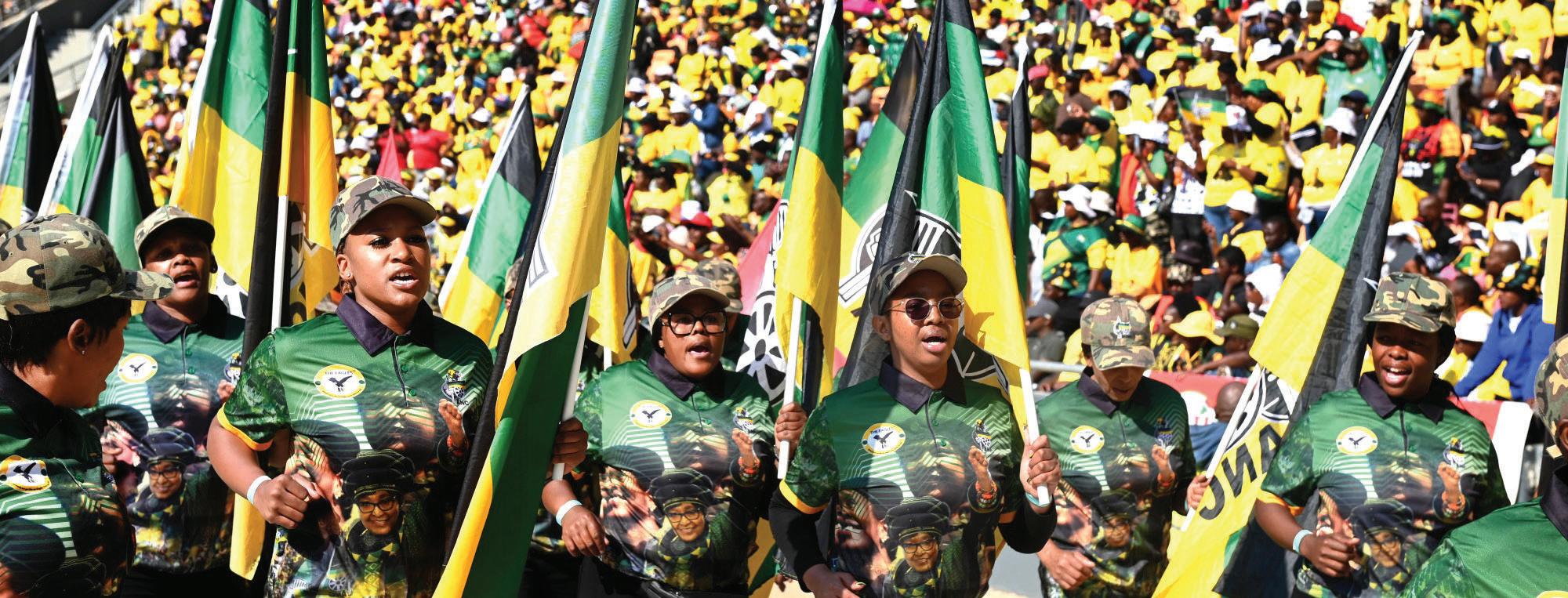

The 2024 AT&T WNBA AllStar Game, which has already sold out at Footprint Center, home of the three-time WNBA champion Phoenix Mercury, will be aired live on ABC at 8:30 p.m. ET/5:30 p.m. PT on July 20th in Phoenix, Arizona. This game promises to be a thrilling showdown, featuring the league’s top stars battling it out. The event will highlight the USA Basketball Women’s National Team facing off against the WNBA All-Stars, selected through a mix of fan, player, media, and coach votes. In addition to celebrating the send-off of WNBA players selected to compete in the 2024 Paris Olympics, the AT&T WNBA All-Star Game will be the centerpiece of an entire weekend of community events hosted by the WNBA - NBRPA “Legends” including Rushia Brown, Sylvia Crawley Spann, Fran Harris, and Bridget Pettis. WNBA All-Star

voting saw a huge jump, increasing by over 600 percent from 2023 to 2024, according to the final numbers released by the league on July 2nd, as reported by US News. In 2023, the top five players — A’ja Wilson, Breanna Stewart, Brittney Griner, Aliyah Boston, and Jackie Young — garnered 391,639 votes. This year, the top five — Caitlin Clark, Aliyah Boston, A’ja Wilson, Breanna Stewart, and Angel Reese — pulled in an impressive 2,732,638 votes. Las Vegas Aces’ A’ja Wilson and Indiana Fever’s
Caitlin Clark lead after first returns of Fan Voting For AT&T WNBA All-Star 2024, but final results saw the record breaking rookie, Clark, leading all vote getters with 700,735 votes and last year’s All-Star first place[95,860] vote getter, Wilson, third in the overall 2024 voting with 607,300.
Team WNBA Roster for the 2024 All-Star Game
DeWanna Bonner Aliyah Boston 2nd place in All-Star Game voting with 618,680 votes Caitlin Clark – Led

Taurasi (Phoenix Mercury),
All-Star Game voting with 700,735 votes
Allisha Gray Dearica Hamby Brionna Jones
Jonquel Jones Kayla McBride Kelsey Mitchell Arike Ogunbowale Nneka Ogwumike Angel Reese Coach – TBN The 2024 USA Basketball Women’s National Team is highlighted by 12 current WNBA players with extensive USA Basketball experience, including Diana
Women football players in Africa have overcome enormous barriers – new book tells the story
Can you give us a very brief history of the African women’s game?
The first official game of men’s football that resembles today’s rules was played in the 1860s in the UK. Men played football in Nigeria as early as 1904. The first recorded game in Africa was in Lagos and most of the players were European colonialists. Nigerians later took up the sport.
Many countries around the world banned women from playing what was considered to be a male
game. Pseudo scientific thinking was that women’s bodies were not suited to it. My interest in writing a book on African women’s football began when I discovered, in the course of my football research, that women were playing the game in Nigeria by the 1930s already – not the late 1900s as is commonly believed. I found it had an incredibly rich history. In a 1937 letter to the anti-colonial West African Pilot newspaper, a reader asked if it was acceptable for women to be playing football in Nigeria. Apparently, an increasing number of Nigerian women had begun to participate in the game. Some were playing with other women and girls and some were playing alongside male

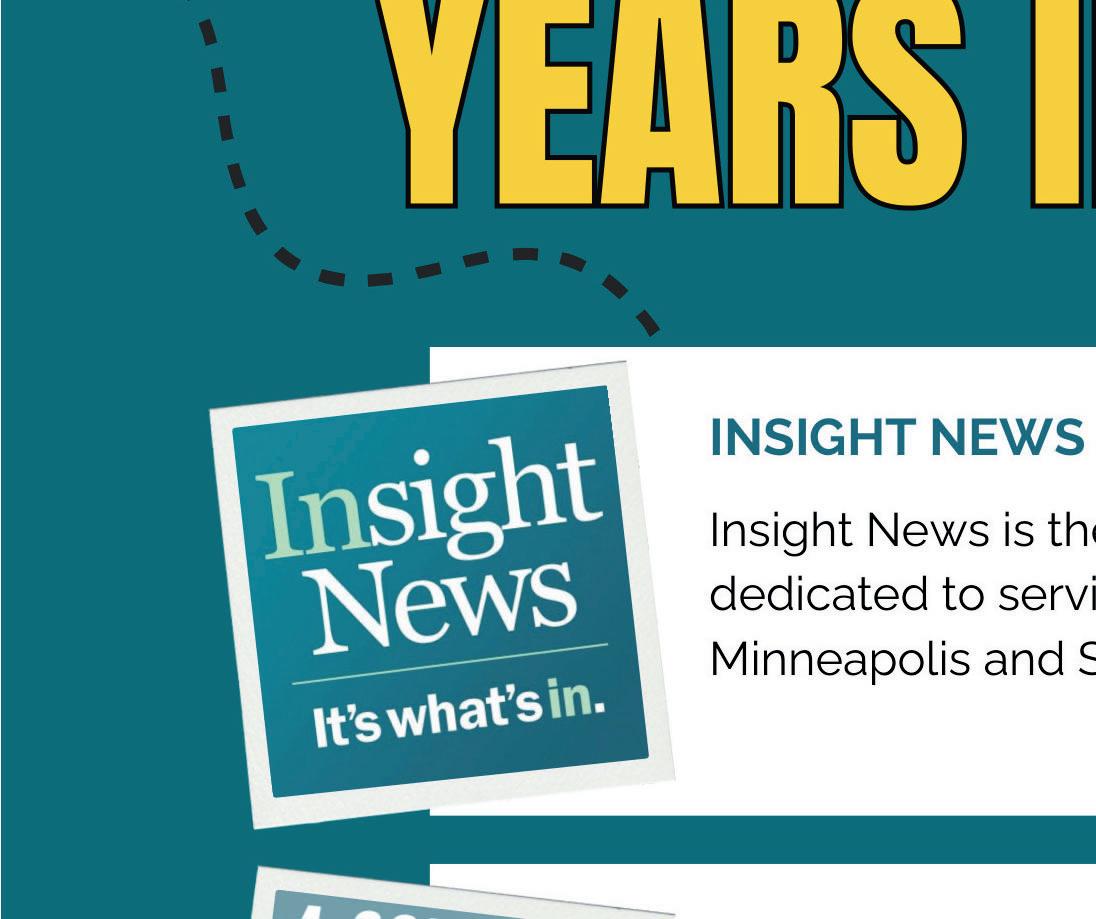
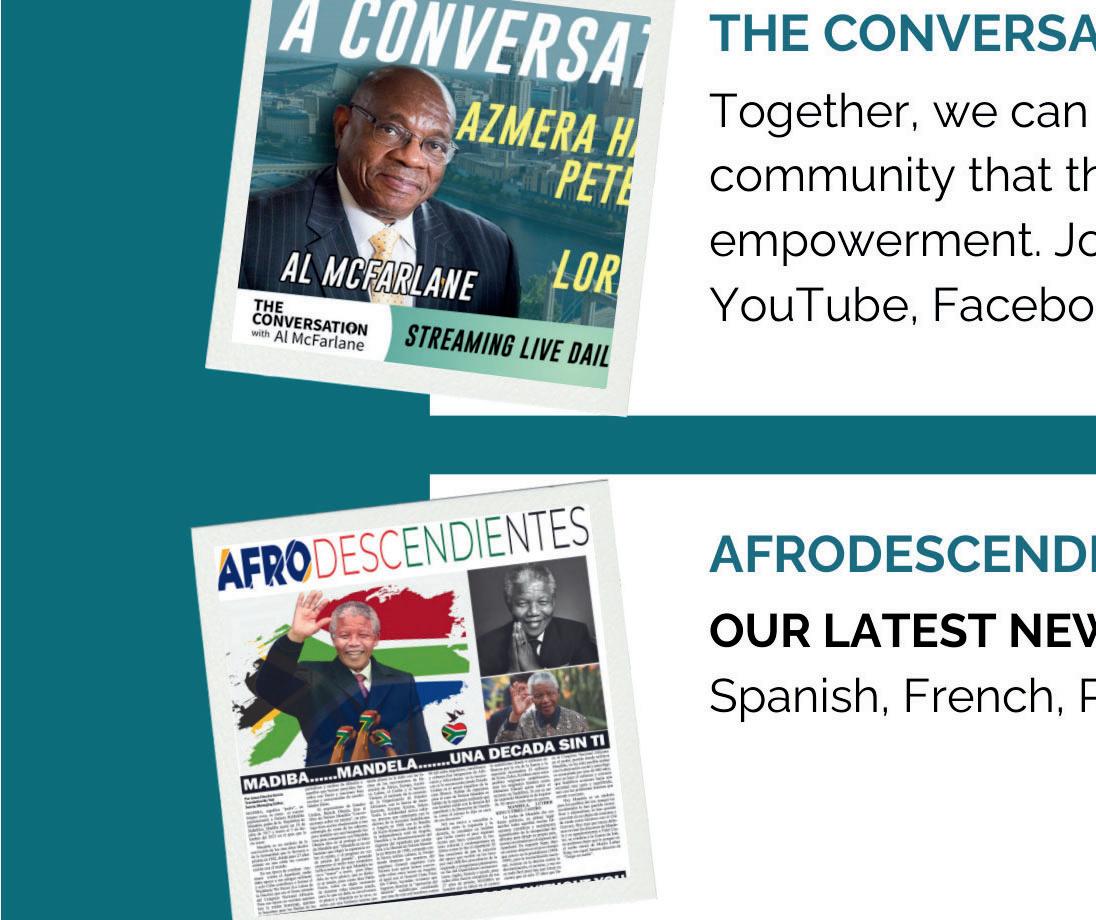
friends. I would learn that, in the 1940s, women in Nigeria, a British colony, formed teams and played against older men in novelty matches to raise funds for second world war efforts. Because of the scientific views of the time, a woman was limited to playing only one half of the game. In some games, the entire team would be substituted at half time.
In South Africa, women are recorded as having participated in curtain raiser games ahead of men’s matches by the early 1960s. Ghana, Cameroon and Côte d’Ivoire record women’s formal participation in football by the early 1970s. Early starts provided these countries with a competitive advantage.
Côte d’Ivoire’s

women’s national football competition began as early as 1975. The country became a base for other African women seeking to play professionally.


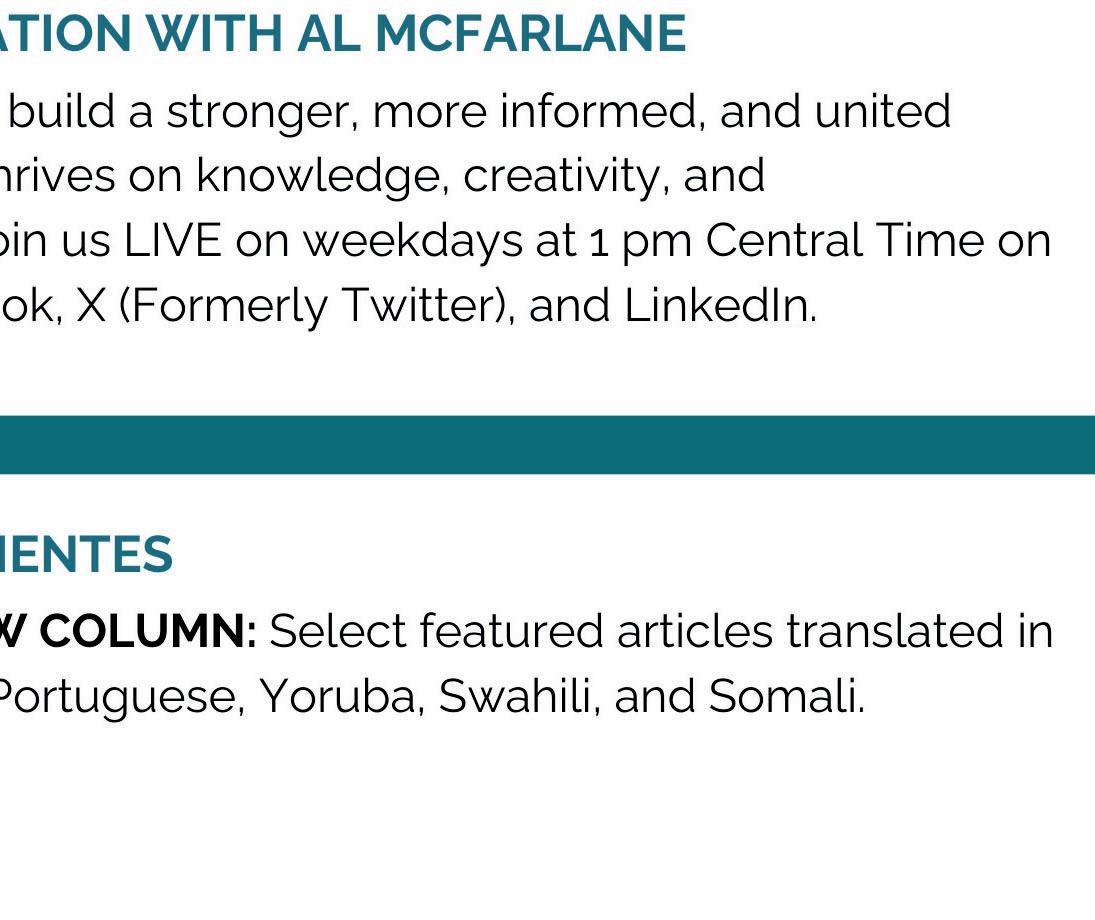



Star player Gladys Adu Opoku, for example, left Ghana in 1987 to play professionally in Côte d’Ivoire. The first truly global women’s national football competition took place in China in 1998 and Côte d’Ivoire represented the continent in an invitational tournament. The first Fifa Women’s World Cup was played in 1991. In that same year the first women’s Africa Cup of Nations tournament was played. It was a World Cup qualifying contest held at locations across Africa.
Where is African women’s football at today?
Today, girls participate in the sport in most African countries, from Botswana to Algeria, Kenya to Sierra Leone. Countries that adopted the women’s game later are quickly catching up with the first movers. The gap between the powerful teams –like Ghana, Nigeria and South Africa – and the others – like Morocco, Senegal and Zambia – has closed remarkably. In Morocco particularly, an injection of state funds has accelerated progress in women’s football, with success stories at both national and club levels.
In the book, I provide statistical markers to demonstrate how fast African women’s football has grown on an international level. For example, Morocco, Nigeria and South Africa went beyond the group stages at the 2023 Women’s World Cup. That had never been done before.
At the Under-17 level, Africa has consistently seen one or more teams reaching the knockout stage at the World Cup.
In 2012 and 2022 Nigeria even reached the medal stage. At the Under-20 World Cup, African sides have reached the medal stage at three tournaments.
Outstanding women players over the years are finally being acknowledged for their contributions: like Mercy Akide, Asisat Oshoala and Chiamaka Nnadozie (Nigeria), Rosella Ayane (Morocco), Barbra Banda (Zambia), Gladys Adu and Alberta Sackey (Ghana), Portia Modise and Desiree Ellis (South Africa) and Gaëlle Enganamouit (Cameroon).
The 2021 introduction of a championship for women’s
clubs in Africa has also brought several new players to the attention of the public. The dominant clubs have been the Mamelodi Sundowns Ladies from South Africa and Morocco’s Asfar. Nigeria’s champion clubs have yet to win the continental championship. Aside from sexism, what are the other challenges?
There is also a religious divide, with Islamic African nations adopting the women’s game later. In most Muslim countries worldwide, girls and women are restricted from playing football because sports attire exposes their legs and hair and they become a focus for the male gaze. However, the book outlines how girls have always resisted restrictions and found ways to participate. Funding represents another problem at all levels. Some countries fund women’s national teams only for competitive matches but not for preparatory games. This means some teams rarely play. Other issues include homophobia and racism. Women players are often perceived to be lesbian and are discriminated against by both the public and football officials. This can have dire consequences. In South Africa, for example, a national team player, Eudy Simelane, was gang raped and murdered by men claiming to be “cleansing” her from lesbianism.
There is still a lot more work to do, to recruit more girls and grow women coaches. Public education is needed and the game needs funding for development. But I hope readers will see more than the barriers facing women’s football in Africa – and understand how much African girls and women have done to overcome these barriers.
Chuka Onwumechili does not work for, consult, own shares in or receive funding from any company or organization that would benefit from this article, and has disclosed no relevant affiliations beyond their academic appointment. This article is republished from The Conversation under a Creative Commons license.
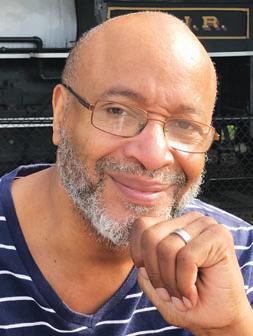
By W.D. Foster-Graham Book Review Editor
By Lena Bee
I remember back in my kindergarten days at Warrington Elementary School, when at one point during class, we had naptime. We had our pillows and blankets, and the lights were turned off while we slept. The majority of us did go to sleep then; some, on the other hand, had a harder time doing it. In keeping with this month’s Planting People Growing Justice Book Award winners, I bring to you Lena Bee’s children’s book Naptime: With Imani and the Fox.
Imani is a preschooler who, unlike her classmates, can’t seem to fall asleep during naptime. She has a pet fox that she can’t take to school with her, so she has a stuffed fox to keep her company. She “wiggles her toes, plays with her feet, and counts the braids on her head.” That doesn’t work, so Imani’s imagination takes over as various alternatives come to mind such as sheep, snowpeople, crossing guards, surfing, orchestras, and a Mardi
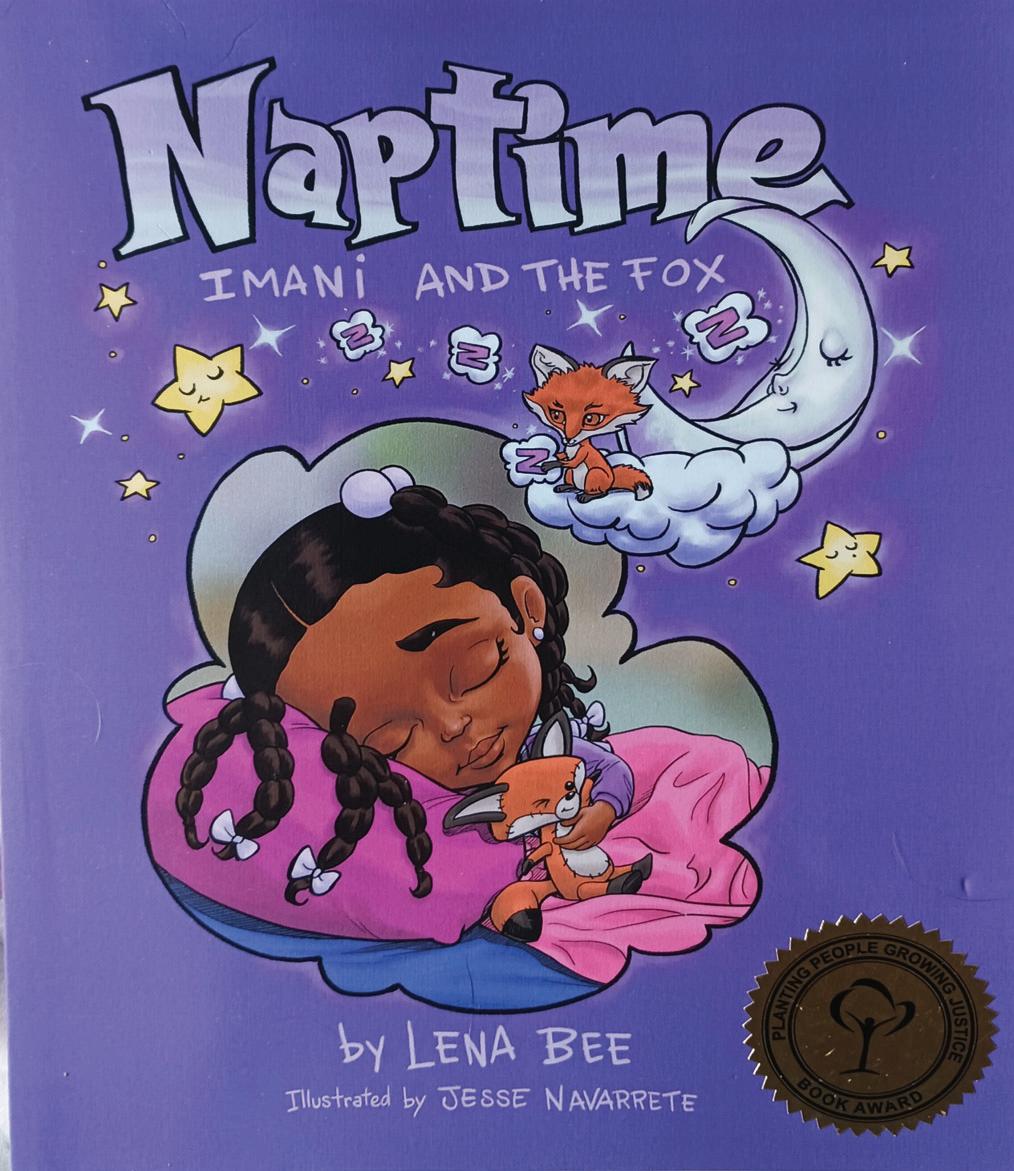
Gras parade, to name a few. She plays out these scenes in her head so as not to awaken the other children, until she finally falls asleep, I appreciate the way Lena Bee encompasses visualization and sound, demonstrating ways children can occupy themselves. Her lesson plan at the end of the story not only promotes literacy, but also social skills, cognitive skills, and the importance of rest and sleep. I love the fact that in all Imani’s visions, her beloved fox is by her side. Lanesa Bejnarowicz (aka Lena Bee) has a master’s degree in education, and is a
former kindergarten teacher, reading specialist, and preschool administrator. From reading Naptime, one can witness her love of children and animals.
For this wonderful story, Lena Bee received a Planting People Growing Justice Award for Best Illustration. Kudos to Jesse Navarette!
Naptime is available through Fulton Books, Amazon, and Barnes and Noble. Thank you, Lena, for giving our children tools to promote their development, health, and literacy!
employed three or four people and the businesses struggled to get by. They were mixed in with the old scrap metal company owned by whites, the big stores like Pigley Wigley’s, and other larger grocery stores owned by Jewish people and white people. There were places like the Blue Note Jazz Club on Washington Avenue owned by black folks which was a huge gathering place in north Minneapolis for all sorts of people. But mostly, the black businesses were small barber shops, the Elks Club which is still here, and some smaller grocery stores, like the little grocery store in the basement of the housing projects on 8th and Bryant Avenue North, which was owned by a black man. At that grocery store, neighbors could get credit with the owner of the little grocery store to buy their food and goods.
The blacks who traveled here closer to the middle of the 20th Century didn’t experience the same upward mobility as the blacks who relocated in the beginning of the 20th Century. By the 1960’s, the jobs were drying up, the economy had slowed, Jim Crow laws were in full swing, housing and employment discrimination was rampant, and land that flowed with milk and honey clearly evaded most blacks who missed the first carriages, buses and trains here.
In the late 1960’s, riots and civil disturbances began to rule the day. Clearly, the land that flowed with milk and honey had dried up. The riots in the late 1960’s that ravaged the U.S. swept into north Minneapolis as well, burning down not just the black businesses on Plymouth Avenue, but all the businesses on Plymouth Avenue.
In a Minneapolis Star Tribune article written by Steve Brandt and Terry Collins in 2007, they looked back at a Minneapolis Star article dated July 25, 1967, where a 21year old Harry (Spike) Moss is quoted as saying, “You tell them rioting is wrong when he doesn’t have his freedom . . . you wait two or three years while this young generation comes along. They see if you
want anything, you got to take it.”
In the 2007 Minneapolis Star Tribune article, a then 61-year old Harry (Spike) Moss said, “We’re still fighting for our basic rights in this city, this state and in this country. Why? Because we’re still being denied equal opportunities – education and employment wise – that we have fought, bled, and shed tears over. Ask yourself, are you getting your fair share? That’s the number one concern, because you want the next generation to have it better than the last. The inequity that caused the problems back then could cause another riot today somewhere else. There will be a lot more anger this time though. And it won’t be orchestrated either. What happened on Plymouth Avenue 40 years ago wasn’t organized. It was spontaneous because the people were mad about the conditions already existing.
“
Put another way, Elder Mahmoud El Kati told KARE 11’s Scott Goldberg this about the 60’s: “For a black person like my father to get an FHA loan was about as easy as getting a camel through the eye of a needle.” He told KARE 11 housing policy was just one of the hurdles lining up in front of blacks. He said in the interview, “What do you want to talk about? Education? Family? Religion? Entertainment? War? Peace? I mean, it’s the same question – black people will get the worst of it.”
When asked about the riots of the 1960’s, Liz Samuels, a lifelong black resident of north Minneapolis told KARE 11, “People were very unhappy with the things around the country, and so they reacted the way everybody else did around the country.”
This was followed by Al McFarlane saying in the same KARE 11 interview, “This was simply a statement of rejecting of this assigned second-class status.”
Alfred Babington Johnson commented in the interview, saying, “It was happening all over the country. The frustration was about how this system worked and started to respond.”
In this same interview, Harriet Kaplan, who was actually caught by a camera the day after the riot, as she was caught taking appliances out of Koval’s appliance store at
Plymouth and James Avenue North, said, “They broke all the windows and they trampled through everything. It looked like people got along. Why the riot happened, I don’t know. “ Finally, Al McFarlane urged fellow north siders to take back a sense of ownership in the KARE 11 interview, when he said, “Ultimately, we have to determine our own future and create our own sense of who we are.”
By the time the 1960’s had arrived, what really made black folks mad was that most African Americans were relegated to the second-class status Al McFarlane was talking about in the interview. As an example, right down the street where the old Sumner-Olson Public Housing units used to be, over 50 percent of all adults who lived in the Sumner Olson public housing projects were working. It’s just that they were stuck in jobs working as dishwashers, doormen, or in sewing factories making minimum wage that was raised to $1.00 an hour in 1967. So yes, the

By Andy Steiner
When Twin Cities resident Don Ryan lost his Irish-immigrant father Sean to suicide in 1989, his overwhelming feelings of guilt and shame led him to bury his emotions. He rarely told anyone how his father had died, and on the rare occasions he did divulge details, it was deeply painful.
Ryan and his three siblings were raised in Philadelphia by working-class parents who struggled with mental illness and addiction. His family kept secrets, he said, and never talked about their feelings, especially difficult emotions like anger, fear or sadness.
“I learned that to be successful I needed to shove my feelings down to get through the day,” Ryan said. “In some ways it was easier to do that, but later I learned that if we have those hard conversations, it will end up helping you for the rest of your life.”
Ryan repressed his feelings around his father’s death for years. All that control and secrecy eventually took a toll on his other relationships and overall health. In 2013, when his cousin Vinny died by suicide, Ryan’s tough exterior took a hit. He struggled to come to terms with the loss, and with the role that Vinny’s schizophrenia played in his death. The mental anguish he felt was debilitating, but Ryan continued to avoid direct discussion about Vinny’s suicide.
Then, in 2022, Ryan’s brother Brendan also died by suicide, and this death eventually tore the lid off his long-buried secrets. The grief he felt at the loss of his brother eventually inspired Ryan, who has had a decadeslong career in counseling and social work, to write The Secret Struggle: Surviving the Suicide of a Loved One (Beaver’s Pond Press, 2024), a self-help-focused memoir designed to offer support and guidance for those who have experienced suicide loss.
The book offers an honest account of Sean, Vinny and Brendan’s lives, as well as an open discussion of the emotional toll that their deaths took on their loved ones. After spending so many years repressing his emotions, Ryan said he sees the act of honestly recounting his story as cathartic. The book has been an opportunity for Ryan and his remaining family members to talk about their losses and develop ways to live healthier lives going forward.
“The fact that we’re
talking about it now, that I can have this open dialogue is great,” Ryan said. “It makes me really hopeful that my nieces and nephews and my children can break this generational cycle.”
I recently spoke with Ryan about his family history, men’s mental health and its connections to suicide, and his hopes for the future. This interview has been edited for length and clarity.
MinnPost: What inspired you to write your book? Did you start writing it right after your brother’s death in 2022?
Don Ryan: No. I needed to wait a while. There was no way I could’ve written my book then. It was too difficult a year. I knew I wanted to do something to respond to the suicides in my family, but I didn’t know what that was. Obviously, Brendan’s death was a culmination of everything. I had to start thinking, “What’s going on with our family?”
Brendan’s death wasn’t just a unique situation. Clearly, all of those deaths were connected somehow. I had to figure that out, or at least think about it.
MP: In your book, you write about how for years you didn’t talk about your father’s suicide death, which happened not long after you had a difficult conversation with him. Why did you stay silent?
DR: I had so much guilt about that. I couldn’t let anybody in. It wasn’t until I started working in therapy that I realized how detrimental that silence was and how many family traits encouraged my shoving all of those feelings down. I would be a much healthier person today if I had started dealing with those feelings 25 years ago.
MP: Would you advise others to speak openly about their loved ones’ suicide?
DR: Yes. If you are able to start that conversation, maybe others can catch up to you. In my book’s intro, I write that I don’t know that I’m right about everything. I don’t have to be. I just want to encourage people to have those important conversations with the people they trust. I think the shame that I felt and my resulting silence didn’t help. It only hurt. If I knew I would’ve gotten the support I needed, I wouldn’t have kept it to myself. But that didn’t happen. Instead I shoved it inside. I was broken, but I never had a breakdown. I never lost my job. I never had any of the classic symptoms of running away or breaking down. But the shame and fear
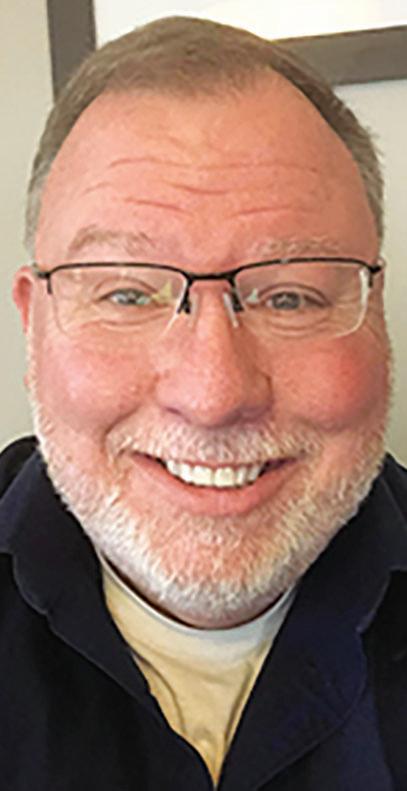
of how people might look at me prevented me from opening up and talking about what happened. Even in moments of vulnerability, when I was able to tell people what happened, I didn’t give all the details. It was a deep, dark secret. I had this façade I put on for the outside world.
MP: What kinds of reactions have you had to your book? What have you heard from readers?
DR: It’s been out for four weeks. I’m bad at selfpromotion, but it is getting out there. I’ve already heard from strangers who’ve said that after reading my book they felt seen and heard. That’s been a great surprise. I also heard from people I already knew but didn’t know that they’d had a suicide in their family. And I’m in this coalition of clinicians who’ve lost patients to suicide. I’m hearing back from those people, as well.
MP: Do you sense any shifts in cultural attitudes about suicide and mental illness?
DR: Religion is one place where I’ve seen that things have changed a little bit. I look at some of the institutions like the Catholic Church, for example, which has limited their talk of suicide being a sin. Younger clergy are pushing to do things a little differently. I do think that prominent people like Simone Biles or Michael Phelps coming forward and saying, “We need to talk about mental health,” is also really making a difference.
MP: Do you hope that this book will help others who have experienced a suicide loss?
DR: The book started as my attempt to support others who have been effected by the suicide of a
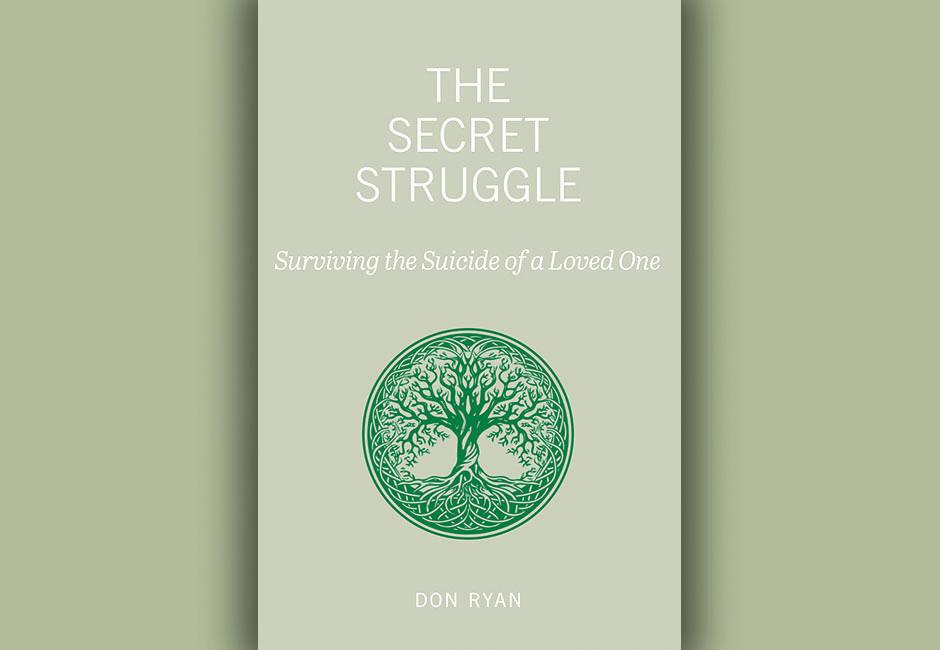
loved one. Not many people understand the stigma and shame that surrounds suicide. I wanted to support others, and I also wanted to identify social stigma as the biggest issue we have. The second half of the book really emphasizes that. I believe that my book has to be a catalyst for conversation. I hope I can have conversations with men about suicide, with people who’ve lost a loved one, with clinicians who are working with people who have been effected by suicide. I want to continue to have all of those conversations. It’s been hard but it’s also been a gift that I was able to work on this book. I’m passionate about this issue, so I made the decision to write this book and connect with others about this topic. I think this might be what I do for the next 10 years of my life.
MP: When you read a paid obituary that is open and honest about the fact that a person died by suicide, how does that make you feel?
DR: There are still plenty of instances where a suicide death is not mentioned. When you see an obituary for a young person, say age 19, and there is no explanation about how they died, you know that most of that time the cause of death is a drug overdose or a suicide. So I think there is still shame around that. But those kinds of more honest obituaries do make me feel hopeful. Those are folks who have lost that important person to them, and because they have chosen to be open about their death, they will most likely get the support they need. When people who’ve been through the same thing read this kind of obituary, it has a positive effect. They may not feel so desperate and alone. This could lead to less suicide.
MP: In your book, you said

you’ve talked with many people whose lives have been impacted by suicide. How do you approach those conversations?
DR: More than anything, I find myself being a listener. I don’t focus on my own story. In the numerous times I’ve met with people impacted by suicide for coffee or phone calls, I’ve learned that they are hungry to share their story. I’ll start with asking about positive memories. I’ll say, “Tell me the greatest thing about your sister” or, “Tell me about that road trip you took.” I want them to focus on their loved one and the positive impact they had on their life, rather than on their death. I find that approach helps people to find calm and peace. Later, we can go back and focus on why the grief is so hard, but at the beginning we focus on the relationship and why that person was so important to them.
MP: In the United States, about 80% of the people who die by suicide are men. The three relatives you lost to suicide fit that demographic. What factors do you think account for this reality?
DR: Of course I am generalizing when I talk about genders here and I am not talking about people with nonconforming gender identities. When women have a problem with anything including a mental health issue, they are usually going to go talk to somebody. Women do a much better job than men of expressing themselves and getting help. Most men have been taught from when they were young not to cry or show weakness. People don’t understand that when a 10-year-old boy turns 25 and he doesn’t know how to express his emotions, that can be dangerous. Men revert back not just to what was taught by their parents but also to what they see in the media, things like, “Be
stoic” or, “Man up.” At the end of the day, it is about men not being able to ask for help, about them feeling like nobody cares. Too often men aren’t comforted. When they are comforted they are shocked that people want to hear if they are having a hard time. I don’t think that’s an exaggeration. That is our biggest factor when it comes to this 80%-20% ratio of men vs. women dying by suicide. If there was any other demographic that represented 80% of all suicides, there would be outrage, money, focus, discussions. It’s not that way with men.
MP: Do you see any cultural trends that may help to reduce the number of men who die by suicide? DR: I look at some of the more historically classic images of men, men who play in the NFL, like the Jason Kelces and the Lane Johnsons of the world. These men are talking openly about their mental health and are saying things like, “Every once in a while I have to step aside and take care of myself.” That didn’t happen years ago. I also see people like Michael Phelps, who has been open about his struggle with depression. I see the Los Angeles Dodgers, who kept player Andrew Toles on as a member of their organization after they cut him from the team so he could get health care. That is amazing. Kudos to that organization. These are examples of something that makes me feel hopeful that things could change.
Andy Steiner Andy Steiner is a Twin Cities-based writer and editor. Before becoming a fulltime freelancer, she worked as senior editor at Utne Reader and editor of the Minnesota Women’s Press. Email her at asteiner@minnpost.com.

employed, or unemployed. What has really changed?
Equality & Justice for All Spike Moss reflects on history and recent events
Published Sep 11, 2014
“They stood up for us,” said Spike Moss, NAACP Community Action Chair, referring to generations of African-Americans in the pursuit of increased civil rights and freedom from oppression in America. “But Ferguson may be the turning point,” Moss continued, referring to the killing of Michael Brown by Officer Darren Wilson in Ferguson, Mo.
A native of Paris, Mo., Moss spoke at length about the curious nature of race relations in that region.
“Missouri was an anti-slave state, but we were born to midwives, because we weren’t allowed in the hospital. The park… never. The movie show… never. At the restaurant you went to the back door and got your food on wax paper. It was that hateful,” Moss said in an exclusive interview with Insight News.
Reflected upon the powerful moment that left him with “…chills…sweating, and the shakes” when his 81 year old grandfather finally fulfilled Moss’ long request to visit the “slave cemetery” where both slaves and animals were buried, separately from whites, as well as indigenous Africans. “I carry the scars of Missouri,” Moss firmly emoted.
“It’s a case of lawlessness by the law when they declare capital punishment behind a carton of cigars and some shoving,” Moss said, again referencing the killing of Brown. “I am honored to have lived long enough to see the truth. After all the whippings and insults, I’ve lived long enough to see what I’ve said all along is being proven right. And you see it all over the America.”
“‘He’s just making trouble. We don’t want him stirring up the natives.’ That’s what they said about me,” said
Moss, referring to his many critics over the years. Noting the power of language, Moss said he objects to being called an activist by officials and media. He said, “All of us in this fight are freedom fighters. An activist has no goal. Freedom is a clear goal… and I’m clear.” Moss rejects the language of race. “There is only one race of people and that’s human,” he said.
Moss is critical of the Minneapolis investigation of police brutality against fellow freedom fighter, Al Flowers.
“They are investigating police arrest policy. They need to investigate the crime. …We deserve real justice…and fairness. Officers have to be charged the same way citizens are,” said Moss. Solutions to problems of racism and injustice will come from within the AfricanAmerican community, Moss said.
“You’re American. Recognize your humanity. Believe in yourself. And have pride. Don’t separate from our children. Don’t criminalize them. The youth are mad, but they are us. When they’re mad, and they’re mad right now, and can’t see justice… we can’t let them be classified as troublemakers,” he said. “There ain’t no outsiders when you’re Black. The trouble is directed toward the youth, but we catch hell as one… whether you’re talking about being put down, or murdered.”
Asked about his sources of courage, Moss, a graduate of Central High School reflected, “I’ve been used to standing up since I was a youth in North Minneapolis. I was taught to have a ‘Yes I can’ attitude.”
“Courage is within us. It’s about what’s important to you. Some folks stand up strong when they’re returning a simple item to the store…but it’s about what’s important to you. We can’t be afraid of our condition and history.”
“We need to use these events as a way to learn. The government needs to put laws in place for officers to be charged with assault and murder. There should be personal accountability,” Moss said.
The Way celebrates 50th anniversary
Published Aug 4, 2016
“For a Moment We Had The Way” by Rolland Robinson tells the story of The Way Unlimited, Inc.
This year marks the 50th anniversary of The Way Unlimited, Inc., founded in 1966 at 1925 Plymouth Ave., which is now occupied by the Minneapolis Police Department Fourth Precinct.
The Way, an organization for social justice and political change, offered programs in African-American studies, poetry, art, dance and music and in 1967 brought the celebration of Kwanza to the Twin Cities. Several community activist and leaders either furthered their platform or got their start at The Way. People such as Mahmoud ElKati, Dr. Josie Johnson, Harry “Spike” Moss, Vusumuzi Zulu, Nothando Zulu and Verlena Matey-Keke all came through The Way.
At one point during The Way’s existence a Hennepin County grand jury indicted The Way’s leadership for “coddling criminals” for teaching Black history classes in prisons in the state. Muhammad Ali once visited The Way during a trip to Minneapolis, as did James Brown and Amiria Baraka.
Violent crime
By Harry Colbert, Jr.
Insight News
Editor
Managing
–Published June 11, 2017 Sun’s out guns out. While most associate that saying with the showing off of well-toned limbs during the summer months, the saying has a far more literal meaning in many urban enclaves. Minneapolis and St. Paul are experiencing their share of violent crime in 2017. At time of press there have been 13 homicides committed in Minneapolis in 2017. The most recent was the June 6 killing of a 37-yearold in North Minneapolis. A day prior a 17-year-old succumbed to his wounds from a weekend shooting. In St. Paul there have been 12 killings thus far this year; four have been teenage girls. Enough is enough. That’s the sentiment
behind this week’s gang summit to be held Friday and Saturday (June 16 and June 17) at the New Salem Baptist Church, 2507 Bryant Ave. N., Minneapolis. International superstar Stevie Wonder will be on hand to talk personally with area gang members to call for and encourage lasting peace. The summit is being called by the group United for Peace – an initiative led by the Rev. Jerry McAfee, the Rev. Alfred Babington-Johnson and community activist Spike Moss.
Moss said intervention is critical if the area wants to have a summer of sun and fun rather than doom and gloom. He said he sees similarities going into the summer of 2017 that he saw in the 1990s when Minneapolis got the moniker “Murderapolis.” Moss convened a summit back then that eventually was replicated in Chicago, Washington D.C, Cleveland, Pittsburgh, Kansas City and other areas plagued by violence.
“In the ‘90s we were able to save thousands of lives, but the reason we’re back is because the things that were promised (by city and state officials) were never delivered,” said Moss.
Moss said jobs, job training and educational opportunities were promised but the promises were unkept.
“We kept up our part but the resources were never provided,” said longtime activist Moss. “The glue to lasting peace is for people to have peace within their own heart and that starts with opportunity.”
Moss is calling on men of the community to join in mentoring and interacting with wayward youth. But he said they must be up for the challenge.
“I’ve had guns pointed at me. We go in there (areas of increased violence) and we go in without guns, without (bulletproof) vest; the only thing we’re armed with is God almighty and the love in our hearts,” said Moss. “We’ve been successful before and we can do it again.”
The straight-talking activist said he knows the summit won’t result in zero violence, but it can greatly reduce the number of violent acts in the community.
“We will never save





everybody but let’s save who we can. Saving lives, that’s the mission,” said Moss.
Minnesota’s Reckoning: Spike Moss on George Floyd and systemic racism
By Pulane Choane Contributing Writer
Published Jun 7, 2024
During a poignant conversation on Radio KFAI’s 90.3 FM during George Floyd week, community leaders and activists gathered on the popular show “The Conversation with Al McFarlane” to reflect on systemic injustices and the long history of racial strife in Minnesota. Broadcasting live from George Floyd Square in South Minneapolis, the discussion brought together influential voices, including Spike Moss, a stalwart freedom fighter and a vocal advocate for the Black community. Moss, whose activism dates to the 1960s, shed light on the persistent issues of police brutality and systemic racism exacerbated by George Floyd’s tragic death.
“Minnesota has been out of order for so many years,” Moss began, his voice heavy with the weight of decades of struggle. He recounted the harrowing incident from 1966 when a young Black girl was brutally beaten by police, sparking the state’s first rebellion. “George Floyd was not just a man; in his death, he became a symbol, a sacrificial lamb that forced the world to look at the ongoing atrocities here,” he explained.
Moss detailed the historical backdrop of Minnesota’s racial tensions, pointing out that despite being a northern state, it has harbored deep-seated racial bias. “We have had more rebellions than any other state, but nobody knew because the local media, owned by the powers that be, never let the truth out,” he asserted.
The conversation turned to the numerous cases Moss has handled over his 42year career, fighting against the injustices imposed on African American and Native American communities. “There was no justice in Minnesota,” he said. “We have far too many police with extensive records
of misconduct that have never been brought to trial.” Moss highlighted the systemic barriers that have prevented accountability, including the lack of action from city councils, mayors, and other state officials. He lamented the consistent failures to charge or convict white police officers despite clear evidence of wrongdoing. “I won 90-some percent of all the lawsuits, and lost 100% of all charges against white officers,” he stated, reflecting a grim reality of racial disparity in legal outcomes. The discussion also touched on the economic disparities that have plagued the Black community in Minnesota. “To live in a state where white people own the majority of mortgages and businesses, and we own less than half of 1%... it’s not just racism, it’s a conspiracy,” Moss argued, painting a picture of systemic exclusion and economic oppression.
Moss also brought attention to recent incidents, like the tragic case of Ricky Cobb II, who was fatally shot by a Highway Patrol officer during a traffic stop. “Ricky didn’t make it home because of an unnecessary and aggressive police action, which is a symptom of the broader disease of racial injustice in our state,” he pointed out.
As the community grapples with these deep-rooted issues, Moss’ words serve as a stark reminder of the challenges ahead. He called on listeners to acknowledge the systemic nature of racism and to actively work towards meaningful change. “Our community will stand up because enough is enough. It’s time for action, for change, and for justice,” Moss concluded, his message resonating with urgency and resolve.
This conversation, set against the backdrop of George Floyd Square and aired during George Floyd week, not only honored Floyd’s memory but also amplified the ongoing struggle for justice and equality in Minnesota. It served as a powerful call to action, urging the community and the nation to face and address the systemic issues that have long plagued society.








